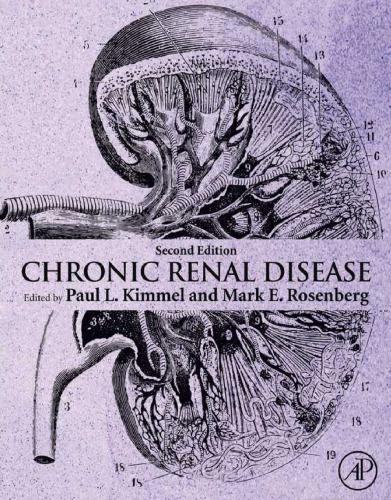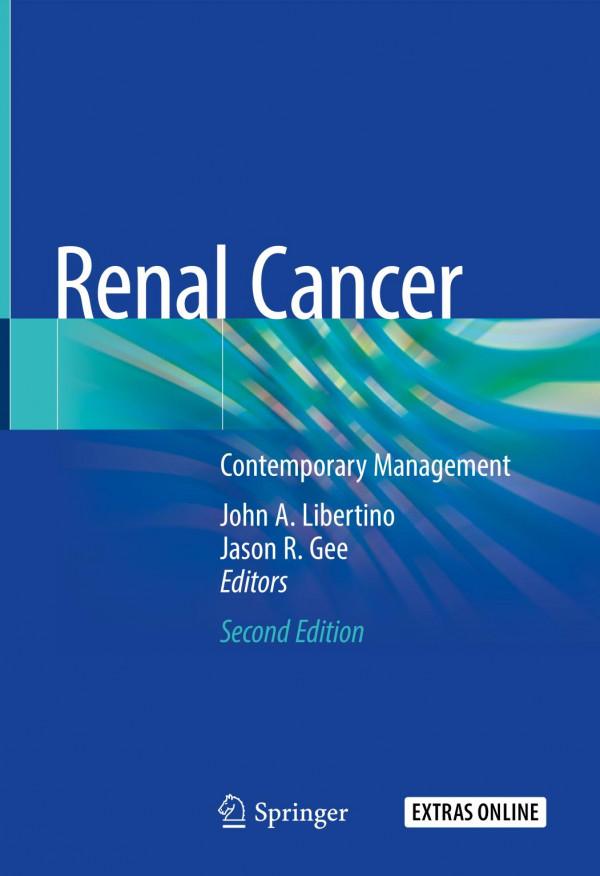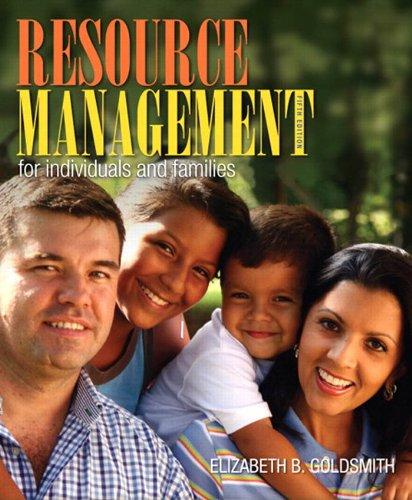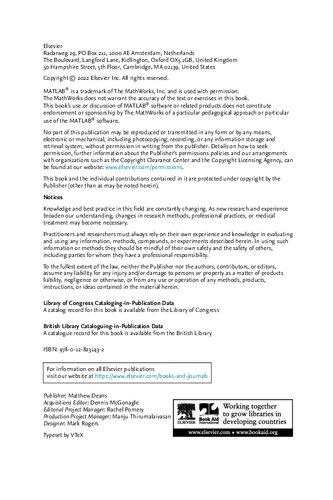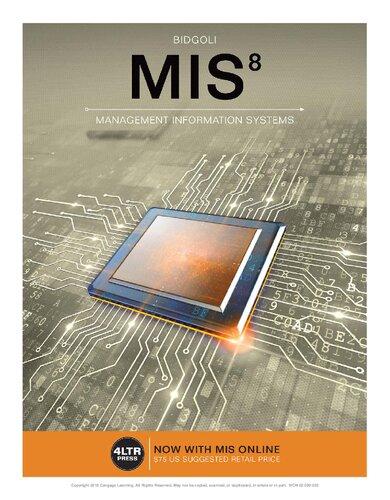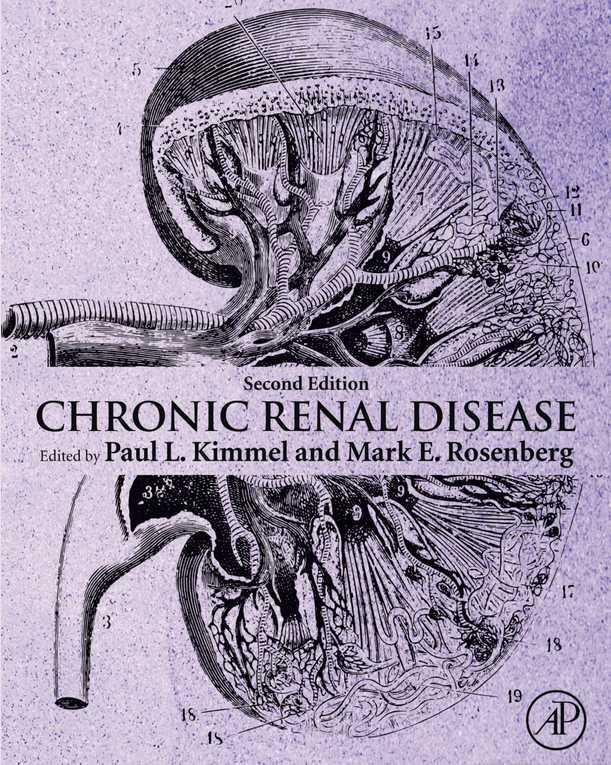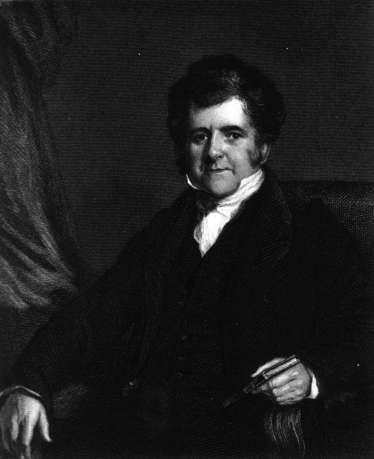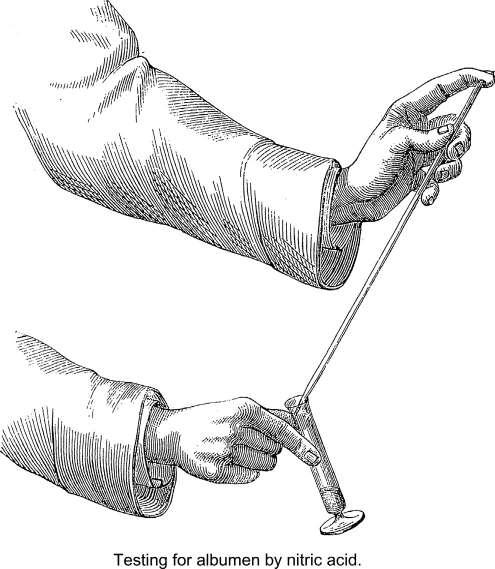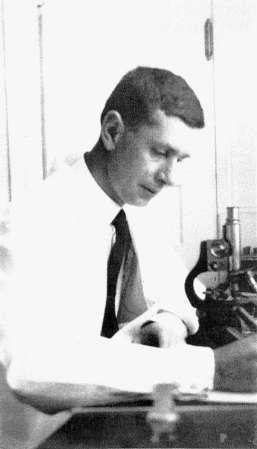https://ebookmass.com/product/chronic-renal-disease-2nd-
Instant digital products (PDF, ePub, MOBI) ready for you
Download now and discover formats that fit your needs...
Renal Cancer: Contemporary Management 2nd ed. 2020 Edition John A. Libertino
https://ebookmass.com/product/renal-cancer-contemporarymanagement-2nd-ed-2020-edition-john-a-libertino/
ebookmass.com
Chronic Coronary Artery Disease 1st Edition Edition James Delemos And Torbjorn Omland (Auth.)
https://ebookmass.com/product/chronic-coronary-artery-disease-1stedition-edition-james-delemos-and-torbjorn-omland-auth/
ebookmass.com
Chronic Coronary Artery Disease. A Companion to Braunwald's Heart Disease James A. De Lemos
https://ebookmass.com/product/chronic-coronary-artery-disease-acompanion-to-braunwalds-heart-disease-james-a-de-lemos/
ebookmass.com
Transnational Lives in Global Cities: A Multi-Sited Study of Chinese Singaporean Migrants 1st ed. Edition Caroline Plüss
https://ebookmass.com/product/transnational-lives-in-global-cities-amulti-sited-study-of-chinese-singaporean-migrants-1st-ed-editioncaroline-pluss/ ebookmass.com
Options and Derivatives Programming in C++23: Algorithms and Programming Techniques for the Financial Industry, 3rd Edition Carlos
Oliveira
https://ebookmass.com/product/options-and-derivatives-programmingin-c23-algorithms-and-programming-techniques-for-the-financialindustry-3rd-edition-carlos-oliveira/
ebookmass.com
Resource Management for Individuals and Families 5th Edition, (Ebook PDF)
https://ebookmass.com/product/resource-management-for-individuals-andfamilies-5th-edition-ebook-pdf/
ebookmass.com
Multiscale Modeling Approaches for Composites 1st Edition George Chatzigeorgiou
https://ebookmass.com/product/multiscale-modeling-approaches-forcomposites-1st-edition-george-chatzigeorgiou/
ebookmass.com
MIS8 : management information systems Hossein Bidgoli
https://ebookmass.com/product/mis8-management-information-systemshossein-bidgoli/
ebookmass.com
Spelljammer: Adventures in Space (D&D Campaign Collection - Adventure, Setting, Monster Book, Map, and DM Screen)
Wizards RPG Team Spelljammer: Adventures In Space (D&D Campaign Collection - Adventure
https://ebookmass.com/product/spelljammer-adventures-in-space-ddcampaign-collection-adventure-setting-monster-book-map-and-dm-screenwizards-rpg-team-spelljammer-adventures-in-space-dd-campaigncollection-adventure/ ebookmass.com
(eTextbook PDF) for Multiculturalism, Crime, and Criminal Justice
https://ebookmass.com/product/etextbook-pdf-for-multiculturalismcrime-and-criminal-justice/
ebookmass.com
CHRONICRENAL DISEASE SECONDEDITION Editedby PAUL L.KIMMEL
MARK E.ROSENBERG
AcademicPressisanimprintofElsevier
125LondonWall,LondonEC2Y5AS,UnitedKingdom 525BStreet,Suite1650,SanDiego,CA92101,UnitedStates 50HampshireStreet,5thFloor,Cambridge,MA02139,UnitedStates TheBoulevard,LangfordLane,Kidlington,OxfordOX51GB,UnitedKingdom
Copyright © 2020ElsevierInc.Allrightsreserved.
Exceptiontotheabove:Chapters28,48,and52:2020PublishedbyElsevierInc.
Nopartofthispublicationmaybereproducedortransmittedinanyformorbyanymeans,electronicormechanical,including photocopying,recording,oranyinformationstorageandretrievalsystem,withoutpermissioninwritingfromthepublisher. Detailsonhowtoseekpermission,furtherinformationaboutthePublisher’spermissionspoliciesandourarrangementswith organizationssuchastheCopyrightClearanceCenterandtheCopyrightLicensingAgency,canbefoundatourwebsite: www.elsevier.com/permissions .
ThisbookandtheindividualcontributionscontainedinitareprotectedundercopyrightbythePublisher(otherthanasmaybenoted herein).
Notices
Knowledgeandbestpracticeinthis fieldareconstantlychanging.Asnewresearchandexperiencebroadenourunderstanding, changesinresearchmethods,professionalpractices,ormedicaltreatmentmaybecomenecessary.
Practitionersandresearchersmustalwaysrelyontheirownexperienceandknowledgeinevaluatingandusinganyinformation, methods,compounds,orexperimentsdescribedherein.Inusingsuchinformationormethodstheyshouldbemindfuloftheirown safetyandthesafetyofothers,includingpartiesforwhomtheyhaveaprofessionalresponsibility.
Tothefullestextentofthelaw,neitherthePublishernortheauthors,contributors,oreditors,assumeanyliabilityforanyinjury and/ordamagetopersonsorpropertyasamatterofproductsliability,negligenceorotherwise,orfromanyuseoroperationofany methods,products,instructions,orideascontainedinthematerialherein.
LibraryofCongressCataloging-in-PublicationData
AcatalogrecordforthisbookisavailablefromtheLibraryofCongress
BritishLibraryCataloguing-in-PublicationData
AcataloguerecordforthisbookisavailablefromtheBritishLibrary ISBN:978-0-12-815876-0
ForinformationonallAcademicPresspublicationsvisitourwebsiteat https://www.elsevier.com/books-and-journals
Publisher: StacyMasucci
AcquisitionEditor: TariK.Broderick
EditorialProjectManager: TracyTufaga
ProductionProjectManager: PunithavathyGovindaradjane
CoverDesigner: MilesHitchen
TypesetbyTNQTechnologies
Dedication Ifacethedualchallengesoflookingforwardandback astheSecondEditionof ChronicRenalDisease emerges intoprint.IamdelightedwiththereceptiontheFirst Editionreceivedandtookitasasummonstocreatean evenbettersecondeffort.Wehavesoughttoputnew informationintoperspective,vitalforthecareofpatients,andtorecruitthebestauthorstoupdatethetext andpresentcomplexnewconceptsinameaningfulway.
ThisSecondEditionisdedicatedtomyteachers,who showedmethebeautyofphysiology,pathophysiology, andtreatment,aswellastheinterconnectionsbetween ourselvesasteachersandphysicians,andourpatients andtheirfamilies.Thegreatestteachersfosteredcritical thinkingandinspiredmetoaskandtrytoanswermany differentquestionsaboutrenaldisease.Eachonehada distinctivepersona.Iambothimpressedbyand amusedbythemultiplicityofviewpointsinourdiscipline.Countlesscolleaguesworkedwithmeonprojects, helpingmetoseefindingsindifferentways,enhancing myapproachestounderstandingdata.Inaddition,I recognizetheroleofmyparentsandsisterinthiseffort. Theywouldhavetrulylovedtohaveseenthisbook.
ThisSecondEditionhasnewauthorsandnew chapters,makingitmorecomprehensive,useful,and focusedonourpatientsworldwide.Thechapter authors allrecognizedexpertsintheirfields have donearemarkablejobofconceptualizingtheirsubjects inclearlanguageandpictures,aswellasrespondingto manyanddiverseeditorialquibblesandcavils.The interactionbetweenauthorsandeditorshasbeenboth scholarlyandveryproductive.Ithankthereturning authorsaswellasthenewonesheartily.Mycoeditor hasbeenajoytoworkwith,complementingmydeficiencieswiththoughtfulness,equanimity,goodsense, andgoodhumor.IthankthestaffatElsevierfortheir
guidanceandperseverance.Theyallunderstoodand immediatelysharedthegoalofcreatingascientific, well-written,useful,andbeautifulbook.Ihopewehave achievedthosegoals.
Thisbookisalsomeanttoimprovethecareandlives ofourpatients.Thelastfiveyearshavewitnessedasea changeinclinicalresearchinnephrology,including patientsaspartnersandcollaboratorsinallaspectsof theresearchenterprise.Thisbookisforthemaswell. Finallyandperhapsforemost,thisbookisforourstudents,whocontinuetoteachaswellaschallengeus,in additiontohopefullylearningfromus.Ihopetheywill findthisbookhelpfulinthinkingaboutthekidneyand renaldisease,andincaringfortheirpatients.Andhow couldInotthankmywife?Thisbookcouldcertainly havebeenwrittenwithouther,butitwouldnothave beenasmuchfun.Ideeplyappreciateherwisdomand consideration.
PaulL.Kimmel
Thisbookisdedicatedtothemanystudents,residents, andfellowswhocontinuetoinspiremetoteachand learn,tomymentorswhohaveshownmethepathways tofollowinmedicineandlife,andtothepatientsIhave caredforwhohavetaughtmeabouttheperseverance andcourageneededtolivewithachronicillness. Heartfeltthankstothemanyauthorswhohave contributedtothisbookandtotheeditorialteamat Elsevierfortheiroutstandingwork.Mostofall,I dedicatethisbooktomywifeMonicaandmychildren Joel,Madeline,andJack thanksforyourunending love,support,andmotivation,andforteachingmehow tohavefun!
MarkE.Rosenberg
ListofContributors BlaiseAbramovitz Renal-ElectrolyteDivision,Department ofMedicine,UniversityofPittsburghSchoolofMedicine, Pittsburgh,PA,UnitedStates
DwomoaAdu HonorarySeniorResearchFellowand ConsultantNephrologist,SchoolofMedicineandDentistry, UniversityofGhana,Accra,Ghana
FarsadAfshinnia DivisionofNephrology,Departmentof InternalMedicine,UniversityofMichigan,AnnArbor,MI, UnitedStates
AnupamAgarwal DivisionofNephrology,Universityof AlabamaatBirmingham,BirminghamVeterans AdministrationMedicalCenter,Birmingham,AL,United States
SarahC.Andrews DivisionofKidneyDiseasesand Hypertension,DepartmentofMedicine,George WashingtonUniversity,Washington,DC,UnitedStates
GeraldAppel DivisionofNephrology,ColumbiaUniversity MedicalCenter,NewYork,NY,UnitedStates
JamesL.Bailey RenalDivision,EmoryUniversity,Atlanta, GA,UnitedStates
GeorgeL.Bakris ComprehensiveHypertensionCenter, DepartmentofMedicine,TheUniversityofChicago Medicine,Chicago,IL,UnitedStates
CarolynA.Bauer DivisionofNephrology,Bronx,NY, UnitedStates
PravirV.Baxi DivisionofNephrology,RushUniversity MedicalCenter,Chicago,IL,UnitedStates
JeffreyS.Berns Renal-ElectrolyteandHypertension Division,DepartmentofMedicine,PerelmanSchoolof MedicineoftheUniversityofPennsylvaniaSchoolof Medicine,Philadelphia,PA,UnitedStates
PeterBirks BritishColumbiaRenalAgency,Vancouver,BC, Canada
AndrewBomback DivisionofNephrology,Departmentof Medicine,ColumbiaUniversityIrvingMedicalCenter,New York,NY,UnitedStates
AnirbanBose DivisionofNephrology,Departmentof Medicine,UniversityofRochesterSchoolofMedicineand Dentistry,Rochester,NY,UnitedStates
FrankC.Brosius,3rd DivisionofNephrology,Department ofInternalMedicine,UniversityofMichigan,AnnArbor, MI,UnitedStates;DivisionofNephrology,Universityof ArizonaCollegeofMedicine,Tucson,AZ,UnitedStates
LeeK.Brown DepartmentofInternalMedicine,University ofNewMexicoSchoolofMedicine,Albuquerque,NM, UnitedStates;UniversityofNewMexicoHealthSciences Center,Albuquerque,NM,UnitedStates;UniversityofNew MexicoSchoolofEngineering,Albuquerque,NM,United States;UniversityofNewMexicoHealthSystemSleep DisordersCenters,Albuquerque,NM,UnitedStates
DavidA.Bushinsky DivisionofNephrology,Departmentof Medicine,UniversityofRochesterSchoolofMedicineand Dentistry,Rochester,NY,UnitedStates
LaurenceW.Busse EmoryUniversity,Divisionof Pulmonary,Allergy,CriticalCareandSleepMedicine, DepartmentofMedicine,EmoryJohnsCreekHospital, JohnsCreek,GA,UnitedStates
RuthC.Campbell MedicalUniversityofSouthCarolina, DivisionofNephrology,Charleston,SC,UnitedStates
MarkCanney UBCDivisionofNephrologyandBritish ColumbiaRenalAgency,Vancouver,BC,Canada
HelenCathro DepartmentofPathologyandLaboratory Medicine,UniversityofVirginiaMedicalCenter, Charlottesville,VA,UnitedStates
JonathanCha ´ vez-In ˜ iguez DivisionofNephrology,Hospital CivildeGuadalajara,UniversityofGuadalajaraHealth ScienceCenter,Guadalajara,Jalisco,Me ´ xico
LakhmirS.Chawla DepartmentofAnesthesiologyand CriticalCareMedicine,GeorgeWashingtonUniversity MedicalCenter,Washington,DC,UnitedStates;Divisionof KidneyDiseasesandHypertension,Departmentof Medicine,GeorgeWashingtonUniversity,Washington,DC, UnitedStates;UniversityCaliforniaofSanDiego,San Diego,CA,UnitedStates
SheldonChen MDAndersonCancerCenter,Houston,TX, UnitedStates
GlennM.Chertow StanfordUniversitySchoolofMedicine, DivisionofNephrology,PaloAlto,CA,UnitedStates
EmilyY.Chew DivisionofEpidemiologyandClinical Applications,NationalEyeInstitute,NationalInstitutesof Health,Bethesda,MD,UnitedStates
MichelChonchol DivisionofRenalDiseasesand Hypertension,UniversityofColoradoDenverAnschutz MedicalCampus,Aurora,CO,UnitedStates
DeborahJ.Clegg UniversityofCaliforniaatLosAngeles, MedicalCenter,LosAngeles,CA,UnitedStates
DavidM.Clive UniversityofMassachusettsMedical School,DepartmentofMedicine,DivisionofRenal Medicine,Worcester,MA,UnitedStates
PiaH.Clive UMassMemorialMedicalCenter,Worcester, MA,UnitedStates
ScottD.Cohen DivisionofKidneyDiseasesand Hypertension,DepartmentofMedicine,George WashingtonUniversity,Washington,DC,UnitedStates
Ashte’K.Collins DivisionofKidneyDiseasesand Hypertension,DepartmentofMedicine,George WashingtonUniversity,Washington,DC,UnitedStates
JamesE.Cooper DivisionofNephrology,Universityof ColoradoAnschutzMedicalCampus,Aurora,CO,United States
RicardoCorrea-Rotter DepartmentofNephrologyand MineralMetabolism,InstitutoNacionaldeCiencias Me ´ dicasyNutricio ´ nSalvadorZubira ´ n,Me ´ xicoCity,Me ´ xico
DanielCukor BehavioralHealth,TheRogosinInstitute, NewYork,NY,UnitedStates
MonicaDalal MedicalFacultyAssociates,George WashingtonUniversity,Washington,DC,UnitedStates
AndrewDavenport UCLCentreforNephrology,University CollegeLondon,RoyalFreeHospital,London,United Kingdom
ScottDavis DivisionofNephrology,UniversityofColorado AnschutzMedicalCampus,Aurora,CO,UnitedStates
SaraN.Davison DepartmentofMedicine,Universityof Alberta,Edmonton,AB,Canada
PierreDelanaye DepartmentofNephrology-DialysisTransplantation,UniversityofLie ` ge,Lie ` ge,Belgium
DickdeZeeuw DepartmentofClinicalPharmacology, UniversityofGroningen,UniversityMedicalCenter Groningen,Groningen,TheNetherlands
MirelaA.Dobre CaseWesternReserveUniversity,Schoolof Medicine,UniversityHospitalCaseMedicalCenter, Cleveland,OH,UnitedStates
PaulDrawz DivisionofRenalDiseasesandHypertension, UniversityofMinnesotaMedicalSchool,Minneapolis,MN, UnitedStates
NatalieEbert Charite ´ UniversityHospital,InstituteofPublic Health,Berlin,Germany
PaulEggers NationalInstituteofDiabetesandDigestiveand KidneyDiseases,NationalInstitutesofHealth,Bethesda, MD,UnitedStates
SilviaFerre ` CharlesandJanePakCenterforMineral MetabolismandClinicalResearch,UniversityofTexas SouthwesternMedicalCenter,Dallas,TX,UnitedStates; DepartmentofInternalMedicine,UniversityofTexas SouthwesternMedicalCenter,Dallas,TX,UnitedStates
BarryI.Freedman DepartmentofInternalMedicine; SectiononNephrology,WakeForestSchoolofMedicine, MedicalCenterBoulevard,Winston Salem,NC, UnitedStates
SusanL.Furth TheChildren’sHospitalofPhiladelphia, Philadelphia,PA,UnitedStates
BixiaGao RenalDivision,DepartmentofMedicine,Peking UniversityFirstHospital;PekingUniversityInstituteof Nephrology,Beijing,China
GuillermoGarcı´a-Garcı ´ a DivisionofNephrology,Hospital CivildeGuadalajara,UniversityofGuadalajaraHealth ScienceCenter,Guadalajara,Jalisco,Me ´ xico
CaseyN.Gashti DivisionofNephrology,RushUniversity MedicalCenter,Chicago,IL,UnitedStates
GregoryG.Germino NationalInstituteofDiabetesand DigestiveandKidneyDisease,NationalInstitutesof Health,Bethesda,MD,UnitedStates
DavidGoldsmith Guy’sandStThomas’Hospital,London, UnitedKingdom
LadanGolestaneh AlbertEinsteinCollegeofMedicine, RenalDivision,MontefioreMedicalCenter,Bronx,NY, UnitedStates
MichaelS.Goligorsky DepartmentsofMedicine, PharmacologyandPhysiology,RenalResearchInstitute, NewYorkMedicalCollege,Valhalla,NY,UnitedStates
ArthurGreenberg DivisionofNephrology,Departmentof Medicine,DukeUniversityMedicalCenter,Durham,NC, UnitedStates
L.ParkerGregg UniversityofTexasSouthwesternand VeteransAffairsNorthTexasHealthCareSystem,Dallas, TX,UnitedStates
LisaM.Guay-Woodford TheGeorgeWashington University,CenterforTranslationalScience,Clinical andTranslationalInstituteatChildren’sNational, Children’sNationalHealthSystem,Washington,DC, UnitedStates
LeeHamm TulaneUniversity,NewOrleans,LA,UnitedStates
AllysonHart DivisionofNephrology,HennepinHealthcare, UniversityofMinnesotaMedicalSchool,Minneapolis,MN, UnitedStates
DanielleHaselby DivisionofNephrology,Hennepin Healthcare,UniversityofMinnesotaMedicalSchool, Minneapolis,MN,UnitedStates
S.SusanHedayati UniversityofTexasSouthwestern,Dallas, TX,UnitedStates
HiddoJ.L.Heerspink DepartmentofClinicalPharmacology, UniversityofGroningen,UniversityMedicalCenter Groningen,Groningen,TheNetherlands
CharlesA.Herzog DivisionofCardiology,Departmentof Medicine,HennepinCountyMedicalCenterandUniversity ofMinnesota,Minneapolis,MN,UnitedStates
ThomasH.Hostetter DepartmentofMedicine,Universityof NorthCarolina,ChapelHill,NC,UnitedStates
AndrewA.House DivisionofNephrology,Departmentof Medicine,WesternUniversityandLondonHealthSciences Centre,London,ON,Canada
KeithA.Hruska DivisionofPediatricNephrology, DepartmentofPediatrics,WashingtonUniversity,St.Louis, MO,UnitedStates;DepartmentsofMedicineandCell Biology,WashingtonUniversity,St.Louis,MO,UnitedStates
AreefIshani MinneapolisVAHealthCareSystem, UniversityofMinnesota,Minneapolis,MN,UnitedStates
RobertT.Isom StanfordUniversitySchoolofMedicine, DivisionofNephrology,PaloAlto,CA,UnitedStates
MatthewT.James DepartmentofMedicine,Cumming SchoolofMedicine,UniversityofCalgary,Calgary,AB, Canada
KenarD.Jhaveri DivisionofKidneyDiseasesand Hypertension,NorthShoreUniversityHospitalandLong IslandJewishMedicalCenter,ZuckerSchoolofMedicineat Hofstra/Northwell,GreatNeck,NY,UnitedStates
KirstenJohansen DivisionofNephrology,Hennepin CountyMedicalCenter,Minneapolis,MN,UnitedStates
RichardJ.Johnson DivisionofRenalDiseasesand Hypertension,UniversityofColoradoAnschutzMedical Campus,Aurora,CO,UnitedStates
Duk-HeeKang DivisionofNephrology,Departmentof InternalMedicine,EwhaWomen’sUniversitySchoolof Medicine,Seoul,SouthKorea
HirokoKanno TokyoWomen’sMedicalUniversity,Tokyo, Japan
YoshihikoKanno TokyoMedicalUniversity,Tokyo,Japan
AmritaD.Karambelkar DepartmentofInternalMedicine, EmoryUniversitySchoolofMedicine,GMEOfficeof GraduateMedicalEducation,Atlanta,GA,UnitedStates
FionaE.KaretFrankl DepartmentofMedicalGeneticsand DivisionofRenalMedicine,UniversityofCambridge, Cambridge,UnitedKingdom
CharbelC.Khoury WashingtonUniversityinSt.Louis,St. Louis,MO,UnitedStates
PaulL.Kimmel DivisionofKidneyDiseasesand Hypertension,DepartmentofMedicine,George WashingtonUniversity,Washington,DC,UnitedStates
JeffreyB.Kopp NationalInstituteofDiabetes,Digestiveand KidneyDiseases,NationalInstitutesofHealth,Bethesda, MD,UnitedStates
StephenM.Korbet DivisionofNephrology,Rush UniversityMedicalCenter,Chicago,IL,UnitedStates
EttyKruzel-Davila DepartmentofNephrology,Rambam HealthCareCampus,RappaportFacultyofMedicineand ResearchInstitute,Technion IsraelInstituteofTechnology, Haifa,Israel
AndrewKummer HealthPartnersNephrology,St.Paul,MN, UnitedStates
LauraLaFave DivisionofEndocrinology,Hennepin Healthcare,UniversityofMinnesotaMedicalSchool, Minneapolis,MN,UnitedStates
JayI.Lakkis UniversityofHawaiiJohnA.BurnsSchoolof Medicine,Wailuku,HI,UnitedStates
LilachO.Lerman DivisionofNephrologyand Hypertension,MayoClinic,Rochester,MN,UnitedStates
AdeeraLevin UBCDivisionofNephrologyandBritish ColumbiaRenalAgency,Vancouver,BC,Canada
SusieQ.Lew DivisionofKidneyDiseasesand Hypertension,DepartmentofMedicine,George WashingtonUniversity,Washington,DC,UnitedStates
ValerieA.Luyckx InstituteofBiomedicalEthicsandthe HistoryofMedicine,UniversityofZurich,Zurich, Switzerland;RenalDivision,BrighamandWomen’s Hospital,HarvardMedicalSchool,Boston,MA,United States
TejK.Mattoo Children’sHospitalofMichigan,WayneState UniversitySchoolofMedicine,Detroit,MI,UnitedStates
SharonE.Maynard UniversityofSouthFloridaMorsani CollegeofMedicine,LehighValleyHealthNetwork, Allentown,PA,UnitedStates
PeterA.McCullough BaylorUniversityMedicalCenter, Dallas,TX,UnitedStates;BaylorHeartandVascular Institute,Dallas,TX,UnitedStates;BaylorJackandJane HamiltonHeartandVascularHospital,Dallas,TX,United States
RajnishMehrotra UniversityofWashington,Seattle,WA, UnitedStates
TimothyW.Meyer StanfordUniversity,SchoolofMedicine, VeteransAffairsHealthCareSystem,PaloAlto,CA,United States
WilliamE.Mitch NephrologyDivision,BaylorCollegeof Medicine,Houston,TX,UnitedStates
OrsonW.Moe CharlesandJanePakCenterforMineral MetabolismandClinicalResearch,DepartmentofInternal Medicine,DepartmentofPhysiology,UniversityofTexas SouthwesternMedicalCenter,Dallas,TX,UnitedStates
SamerMohandes DivisionofNephrology,Departmentof InternalMedicine,OhioStateUniversityWexnerMedical Center,Columbus,OH,UnitedStates
AlvinH.Moss CenterforHealthEthicsandLaw,RobertC. ByrdHealthSciencesCenter,WestVirginiaUniversity, Morgantown,WV,UnitedStates
MarvaMoxey-Mims Children’sNationalHealthSystem, TheGeorgeWashingtonUniversitySchoolofMedicine, Washington,DC,UnitedStates
SangeethaMurugapandian DivisionofNephrology, UniversityofArizonaCollegeofMedicine,Tucson,AZ, UnitedStates;BannerUniversityMedicalCenterTucson andSouth,Tucson,AZ,UnitedStates
KarlA.Nath DivisionofNephrologyandHypertension, MayoClinic,Rochester,MN,UnitedStates
JoelNeugarten AlbertEinsteinCollegeofMedicine,Renal Division,MontefioreMedicalCenter,Bronx,NY,United States
JavierA.Neyra CharlesandJanePakCenterforMineral MetabolismandClinicalResearch,UniversityofTexas SouthwesternMedicalCenter,Dallas,TX,UnitedStates; DepartmentofInternalMedicine,DivisionofNephrology, BoneandMineralMetabolism,UniversityofKentucky, Lexington,KY,UnitedStates
AllenR.Nissenson DepartmentofMedicine,DavidGeffen SchoolofMedicine,UniversityofCalifornia,LosAngeles, CA,UnitedStates;DaVita,Inc.,Denver,CO,UnitedStates
EhsanNobakht DivisionofKidneyDiseasesand Hypertension,DepartmentofMedicine,George WashingtonUniversity,Washington,DC,UnitedStates
ThomasD.Nolin CenterforClinicalPharmaceutical Sciences,DepartmentofPharmacyandTherapeuticsand DepartmentofMedicineRenalElectrolyteDivision, UniversityofPittsburghSchoolsofPharmacyand Medicine,Pittsburgh,PA,UnitedStates
KeithC.Norris DepartmentofMedicine,DavidGeffen SchoolofMedicine,UniversityofCalifornia,LosAngeles, CA,UnitedStates
JennaM.Norton NationalInstituteofDiabetesand DigestiveandKidneyDiseases,NationalInstitutesof Health,Bethesda,MD,UnitedStates
KristenL.Nowak DivisionofRenalDiseasesand Hypertension,UniversityofColoradoDenverAnschutz MedicalCampus,Aurora,CO,UnitedStates
AkinloluO.Ojo AssociateVicePresidentforClinical ResearchandGlobalHealthInitiatives,Universityof ArizonaHealthSciences,Tucson,AZ,UnitedStates
MadeleineV.Pahl DivisionofNephrologyand Hypertension,UCIMedicalCenter,Orange,CA,United States
MarkS.Paller UniversityofMinnesota,Minneapolis,MN, UnitedStates
BiffF.Palmer DepartmentofInternalMedicine,University ofTexasSouthwesternMedicalCenter,Dallas,TX,United States
NicholetteD.Palmer DepartmentofBiochemistry,Wake ForestSchoolofMedicine,MedicalCenterBoulevard, Winston Salem,NC,UnitedStates
SamirS.Patel RenalSection,VeteransAffairsMedical Center,Washington,DCandGeorgeWashingtonUniversity MedicalCenter,Washington,DC,UnitedStates
RobertoPecoits-Filho SchoolofMedicine,Pontificia UniversidadeCatolicadoParana,Curitiba,Brazil
StevenJ.Peitzman DrexelUniversityCollegeofMedicine, Philadelphia,PA,UnitedStates
AldoJ.Peixoto SectionofNephrology,YaleSchoolof Medicine,andHypertensionProgramattheYaleNew HavenHospitalHeartandVascularCenter,NewHaven, CT,UnitedStates
Phuong-ThuT.Pham DepartmentofMedicine,Nephrology Division,DavidGeffenSchoolofMedicineatUCLA, KidneyTransplantProgram,LosAngeles,CA,United States
Phuong-ChiT.Pham DepartmentofMedicine,Nephrology andHypertensionDivision,DavidGeffenSchoolof MedicineatUCLA,UCLA-OliveViewMedicalCenter, Sylmar,CA,UnitedStates
BethPiraino UniversityofPittsburgh,Pittsburgh,PA, UnitedStates
RobertoPisoni MedicalUniversityofSouthCarolina, DivisionofNephrology,Charleston,SC,UnitedStates
TonRabelink DepartmentofNephrology,LeidenUniversity MedicalCenter,Leiden,Netherlands
JaiRadhakrishnan DivisionofNephrology,Departmentof Medicine,ColumbiaUniversityIrvingMedicalCenter,New York,NY,UnitedStates
MahboobRahman UniversityHospitalsClevelandMedical Center,CaseWesternReserveUniversity,LouisStokes ClevelandVAMedicalCenter,Cleveland,OH,United States
DominicS.Raj DivisionofKidneyDiseasesand Hypertension,DepartmentofMedicine,George WashingtonUniversity,Washington,DC,UnitedStates
JuanC.Ramı´rez-Sandoval DepartmentofNephrologyand MineralMetabolism,InstitutoNacionaldeCiencias Me ´ dicasyNutricio ´ nSalvadorZubira ´ n,Me ´ xicoCity,Me ´ xico
JananiRangaswami EinsteinMedicalCenter,Philadelphia, PA,UnitedStates;SidneyKimmelCollegeofThomas JeffersonUniversity,Philadelphia,PA,UnitedStates
JaneF.Reckelhoff Women’sHealthResearchCenter, UniversityofMississippiMedicalCenter,Jackson,MS, UnitedStates
RenuRegunathan-Shenk DivisionofKidneyDiseasesand Hypertension,DepartmentofMedicine,George WashingtonUniversity,Washington,DC,UnitedStates
ScottReule MinneapolisVAHealthCareSystem,University ofMinnesota,Minneapolis,MN,UnitedStates
ClaudioRonco Universita ` degliStudidiPadova,Padova, Italy;DepartmentofNephrology,Dialysisand Transplantation,SanBortoloHospital,Vicenza,Italy
MarkE.Rosenberg DivisionofRenalDiseasesand Hypertension,UniversityofMinnesotaMedicalSchool, Minneapolis,MN,UnitedStates
MitchellH.Rosner DivisonofNephrology,Universityof Virginia,Charlottesville,VA,UnitedStates
BradRovin DivisionofNephrology,DepartmentofInternal Medicine,OhioStateUniversityWexnerMedicalCenter, Columbus,OH,UnitedStates
PrabirRoy-Chaudhury TheUniversityofNorthCarolina KidneyCenter,ChapelHill,NC,UnitedStates
RebeccaRuebner JohnsHopkinsUniversitySchoolof Medicine,Baltimore,MD,UnitedStates
AndrewD.Rule DivisionofNephrologyandHypertension andDivisionofEpidemiology,MayoClinic,Rochester,MN, UnitedStates
JeffM.Sands RenalDivision,EmoryUniversity,Atlanta, GA,UnitedStates
LynnE.Schlanger RenalDivision,EmoryUniversity, Atlanta,GA,UnitedStates
SarahJ.Schrauben Renal-ElectrolyteandHypertension Division,DepartmentofMedicine,PerelmanSchoolof MedicineoftheUniversityofPennsylvaniaSchoolof Medicine,Philadelphia,PA,UnitedStates
StephenSeliger DepartmentofMedicine,Divisionof Nephrology,UniversityofMarylandSchoolofMedicine, Baltimore,MD,UnitedStates
MaulinShah NephrologyDivision,BaylorCollegeof Medicine,Houston,TX,UnitedStates;NephrologySection, MichaelE.DeBakeyVeteransAffairsMedicalCenter, Houston,TX,UnitedStates
RichardH.Sterns UniversityofRochesterSchoolof MedicineandDentistryandRochesterGeneralHospital, Rochester,NY,UnitedStates
ErikStites DivisionofNephrology,UniversityofColorado AnschutzMedicalCampus,Aurora,CO,UnitedStates
ToshifumiSugatani DivisionofPediatricNephrology, DepartmentofPediatrics,WashingtonUniversity,St.Louis, MO,UnitedStates
StephenC.Textor DivisionofNephrologyand Hypertension,MayoClinic,Rochester,MN,UnitedStates
RaviThadhani Cedars-SinaiMedicalCenter,LosAngeles, CA,UnitedStates;HarvardMedicalSchool,Boston,MA, UnitedStates
BijinThajudeen DivisionofNephrology,Universityof ArizonaCollegeofMedicine,Tucson,AZ,UnitedStates; BannerUniversityMedicalCenterTucsonandSouth, Tucson,AZ,UnitedStates
SurabhiThakar UniversityofMinnesota,Minneapolis,MN, UnitedStates
GeorgeThomas ClevelandClinicFoundation,Cleveland, OH,UnitedStates
RaymondR.Townsend DepartmentofMedicine,Perelman SchoolofMedicine,UniversityofPennsylvania, Philadelphia,PA,UnitedStates
JeffreyTurner YaleUniversity,NewHaven,CT,United States
MarkL.Unruh DepartmentofInternalMedicine,University ofNewMexicoSchoolofMedicine,Albuquerque,NM, UnitedStates;NephrologySection,NewMexicoVeterans Hospital,Albuquerque,NM,UnitedStates
BradleyL.Urquhart DepartmentofPhysiologyand PharmacologyandDivisionofNephrology,Departmentof
Medicine,SchulichSchoolofMedicineandDentistry, WesternUniversity,London,ON,Canada
JosephA.Vassalotti DivisionofNephrology,Departmentof Medicine,IcahnSchoolofMedicineatMountSinai,and NationalKidneyFoundation,Inc.,NewYork,NY,United States
NosratolaD.Vaziri DivisionofNephrologyand Hypertension,UCIMedicalCenter,Orange,CA,United States
ManuelT.Velasquez DivisionofKidneyDiseasesand Hypertension,DepartmentofMedicine,George WashingtonUniversity,Washington,DC,UnitedStates
NishaVerHalen CenterforIntegrativeHealthand Wellbeing,WeilCornellMedicine,NewYork,NY,United States
SalinaP.Waddy AtlantaVeteransAdministration, DepartmentofNeurology,Decatur,GA,UnitedStates
JinweiWang RenalDivision,DepartmentofMedicine, PekingUniversityFirstHospital;PekingUniversity InstituteofNephrology,Beijing,China
MarcWeber KidneySpecialistsofMinnesota,Minneapolis, MN,UnitedStates
MatthewR.Weir DivisionofNephrology,Universityof MarylandSchoolofMedicine,Baltimore,MD,UnitedStates
ChristineA.White DivisionofNephrology,Queen’s University,Kingston,ON,Canada
WilliamL.Whittier DivisionofNephrology,Rush UniversityMedicalCenter,Chicago,IL,UnitedStates
MatthewJ.Williams DivisionofPediatricNephrology, DepartmentofPediatrics,WashingtonUniversity,St.Louis, MO,UnitedStates
AlexanderC.Wiseman DivisionofNephrology,University ofColoradoAnschutzMedicalCampus,Aurora,CO, UnitedStates
DavidC.Wymer UniversityofFlorida,MalcomRandall VAMC,Gainesville,FL,UnitedStates
DavidT.G.Wymer MountSinaiMedicalCenter,Miami Beach,FL,UnitedStates
JerryYee HenryFordHospital,DivisionofNephrologyand Hypertension,Detroit,MI,UnitedStates
LuxiaZhang RenalDivision,DepartmentofMedicine, PekingUniversityFirstHospital;PekingUniversity InstituteofNephrology,Beijing,China
ShougangZhuang DepartmentofNephrology,Shanghai EastHospital,TongjiUniversitySchoolofMedicine, Shanghai,China
FuadN.Ziyadeh FacultyofMedicine,AmericanUniversity ofBeirut,Beirut,Lebanon
AbouttheEditors PaulL.Kimmel,MD,MACP,FRCP,FASN, was educatedatYaleCollegeandtheNewYorkUniversity SchoolofMedicine.Hecompletedhisinternalmedicine residencyatBellevueHospitalinNewYorkCityand NephrologyfellowshipattheHospitaloftheUniversity ofPennsylvania.Hewasamemberofthefacultyatthe UniversityofPennsylvaniaandtheGeorgeWashington University,whereheattainedtherankofprofessor. From2001to2006,Dr.KimmelservedasDirectorofthe DivisionofRenalDiseasesandHypertensionatGeorge WashingtonUniversity.From2006to2008,hewasthe DirectorofEducationoftheAmericanSocietyof Nephrology.Dr.KimmelcurrentlyisClinicalProfessor ofMedicineatGeorgeWashingtonUniversityin Washington,DC.Hisinterestsincludepsychosocial adaptationtochronicrenaldisease,sleepdisordersin patientswithkidneydisease,zincmetabolisminrenal diseases,HIV-associatedkidneydiseases,theclinical geneticsofcommonkidneydisease,andtheinterrelationshipsbetweenacutekidneyinjuryand chronickidneydisease.
MarkE.Rosenberg,MD,FASN, attendedmedical schoolattheUniversityofManitobainWinnipeg, Canada,anddidhisinternalmedicineresidencyand nephrologyfellowshipattheUniversityofMinnesota. HeservedasDirectoroftheDivisionofRenalDiseases andHypertensionattheuniversityfrom2000to2009. From2009to2012,hewastheChiefofMedicineand DirectorofthePrimaryandSpecialtyMedicineService LineattheMinneapolisVAHealthCareSystem. Dr.RosenbergcurrentlyservesasViceDeanforEducationandAcademicAffairs,andProfessorofMedicine attheUniversityofMinnesotaMedicalSchoolinMinneapolis,Minnesota.Inthisposition,heisresponsible forthecontinuumofmedicaleducation.Heservedas ChairofthePostgraduateEducationCommitteeand EducationDirectorforKidneyWeekfor6yearsbefore beingelectedin2013totheCounciloftheAmerican SocietyofNephrology.Dr.RosenbergservedasPresidentoftheAmericanSocietyofNephrologyin2019.His interestsincludepathophysiologyandprogressionof chronickidneydisease,kidneyregenerationfollowing acuteinjury,modelsofcaredeliveryincludingtelehealth,andworkforceissuesinnephrology.
Abbreviations ACEI Angiotensin-convertingenzymeinhibitor
ACR Albumin:creatinineratio
ADPKD Autosomaldominantpolycystickidneydisease
AIDS Acquiredimmunodeficiencysyndrome
AKI Acutekidneyinjury
ARB Angiotensinreceptorblocker
BMI Bodymassindex
bpm Beatsperminute
CCB Calciumchannelblocker
CHF Congestiveheartfailure
CKD Chronickidneydisease
CPAP Continuouspositiveairwaypressure
CRS Cardiorenalsyndrome
CrCl Creatinineclearance
CRP C-reactiveprotein
CT Computedtomography
CVD Cardiovasculardisease
DM Diabetesmellitus
DN Diabeticnephropathy
DR Diabeticretinopathy
EPO Erythropoietin
ESA Erythropoiesis-stimulatingagent
ESRD End-stagerenaldisease
FDA FoodandDrugAdministration
FGF-23 Fibroblastgrowthfactor23
GFR Glomerularfiltrationrate
eGFR Estimatedglomerularfiltrationrate
mGFR Measuredglomerularfiltrationrate
HBV HepatitisBvirus
HCV HepatitisCvirus
HD Hemodialysis
HIV Humanimmunodeficiencyvirus
HIVAN Humanimmunodeficiencyvirus associated nephropathy
HTN Hypertension
HUS Hemolyticuremicsyndrome
IL Interleukin
LN Lupusnephritis
MN Membranousnephropathy
MCD Minimalchangedisease
MGUS Monoclonalgammopathyofunknownsignificance
MRI Magneticresonanceimaging
NAD Nicotinamideadeninedinucleotide
NIH NationalInstitutesofHealth
NIDDK NationalInstituteofDiabetesandDigestiveandKidney Diseases
NSAID Nonsteroidalantiinflammatorydrug
OSA Obstructivesleepapnea
PCR Protein:creatinineratio
PD Peritonealdialysis
RAAS Renin angiotensin aldosteronesystem
RBC Redbloodcells
RVD Renalvasculardisease
RCT Randomizedcontrolledtrials
RRT Renalreplacementtherapy
RT Renaltransplantation
SC Subcutaneous
SCD Sicklecelldisease
SCN Sicklecellnephropathy
SLE Systemiclupuserythematosus
S[Alb] Serumalbuminconcentration
S[Ca] Serumcalciumconcentration
S[Cr] Serumcreatinineconcentration
S[K] Serumpotassiumconcentration
S[Mg] Serummagnesiumconcentration
S[P] Serumphosphateconcentration
S[UA] Serumuricacidconcentration
S[X] SerumXconcentration
T1DM Diabetesmellitus,type1
T2DM Diabetesmellitus,type2
TGF Transforminggrowthfactor
TNF Tumornecrosisfactor
TTP Thromboticthrombocytopenicpurpura
UNA Urinarynitrogenappearance
UAlbV Urinaryalbuminexcretion
UACR Urinealbumin:creatinineratio
UProV Urinaryproteinexcretion
UPCR Urineprotein:creatinineratio
USRDS UnitedStatesRenalDataSystem
VEGF Vascularendothelialgrowthfactor
25(OH)D3 25hydroxyvitaminD 1,25(OH)2D3 1,25dihydroxycholecalciferol,calcitriol
1 Introduction ChronicRenalDisease PaulL.Kimmela,MarkE.Rosenbergb
aDivisionofKidneyDiseasesandHypertension,DepartmentofMedicine,GeorgeWashingtonUniversity,Washington, DC,UnitedStates; bDivisionofRenalDiseasesandHypertension,UniversityofMinnesotaMedicalSchool,Minneapolis, MN,UnitedStates
INTRODUCTIONTOTHE FIRSTEDITION Inourdiscussionsasweplannedthiswork,wewere struckthatnomajortextbookhadconsideredtherelativelynewfieldofchronickidneydisease CKD asa coherentwhole.Itmustbeacknowledgedthatthe CKDrevolutionhastransformedtheclinicalandscientificlandscapesofnephrology,bysystematizingtheclassificationoftheproteanaspectsofthediscipline,and settingboundariesthathaveallowedclinicalepidemiologyandclinicalresearchtoadvance,perhapsexponentially.CKDclassificationshaveledtonew nomenclatureforacuterenaldiseaseaswell,which hasproveduseful.Inaddition,theapproachhasledto advancesinconsideringacutekidneyinjury(AKI)and CKDasinterrelatedsyndromes.Nevertheless,theclassificationapproachmustnotnarrowtherichnessofclinicalobservationanddiagnosticetiologicclaritythat hascharacterizedourfieldoverthelastcenturyorso. Thisbookcoversbroadly,butcomprehensively,thehistory,pathophysiology,andpracticalapproachestodiagnosis,patientcare,andtreatmentissuesinCKD.The scopeofthisbookislimitedtoCKD uptotheinitiation ofend-stagerenaldisease(ESRD)care.Thisdelineated population,however,entailsthevastmajorityofCKD patients.
Wehavespecificallysolicitedpreeminentauthors whoareexpertsinthescientificunderpinningsand theclinicalimplicationsoftheirchosentopicsto contributetothebook.Basicbiologicknowledgeof courseisthefoundationofpathophysiologicapproaches andclinicaltherapeutics.Overthepastdecade,
enormousadvanceshavebeenmadeinourunderstandingofthegeneticsofkidneydisease.Ourappreciationof animportantcauseofCKDasacommondisorderthat hasMendelianaspectsaswellhasmadeusreassessapproachestoscreeningandtreatmentandmayrevolutionizepatientcare,bringingpersonalizedmedicineto theCKDclinic.WeunderstandCKDasadiseasethat variesacrosstheglobe,asaresultofcomplexinteractionsofgeneticsandtheenvironment,including poverty.Greatstrideshavebeenmadeinourunderstandingofthebreadthandnaturalhistoryofpediatric CKD,inpartbecauseoftheestablishmentofwelldesignedobservationalstudiesmorethanadecade ago.Theroleofcommoncomorbiditiessuchasdiabetes mellitusandhypertensionhasbeenstudied,butaswith nutritionanditsimprovementinthispopulation,much workremainstobedone.Overthepasttwodecades,the roleofinflammationinCKDhasbeenincreasingly determined,buttreatmentsusingthisknowledgehave beenelusive.Treatmentsoforgansystemcomplications ofdiminutioninglomerularfiltrationrate(GFR)and uremiaareatwidelyvaryingstagesofdevelopment andmaturity,andourevidencebaseinafewofthesedomainsandinspecificpatientsubpopulationsiswoefully inadequate.Althoughseveralpathwaysculminatingin kidneydiseasehavebeenidentified,withdiversetreatmentopportunitiesandimplications,wehavelearnedto ourchagrinthatmoretreatmentisnotnecessarilybetter treatment.Wemustdevelopandtestnoveltherapies andinterventionstopreventtheinitiationandamelioratetheprogressionofCKD.Ifandwhenthetime comes,wemusthelpourpatientsprepareforESRD care.Advancesintheclinicaltrialsandbasicsciences
associatedwithCKDmayhelpusachieveourgoals improvingthequantityandqualityoflifeofourpatients withCKD.
Thisbook,wehope,willbeareferenceforallwho wanttoknowaboutorincreasetheirknowledge regardinganyorallaspectsofCKD.Asbefitsa21stcenturypublication,itisavailableinpaperandelectronic versions.Therearespecificchaptersregardingconsiderationsofcertainpatientscenariosorsyndromes.Each chapterisgroundedintheexperienceofaspecific patient whomwehaveseen,andthatyouhaveseen orwillencounteroveryourcareer.Perusingthe TableofContents,afewchaptersmayatfirstblush seemduplicative,buttheyinfactapproachproblems fromverydifferentangles,withdifferentexpertise. TheproblemsinCKDarenecessarilyinterdigitated andoverlapping.Wedidnotwanttheauthorstobeartificiallylimitedbychaptertitles.Itishopedthateach chapteriscomprehensiveandcanstandonitsownas areference.Weoweagreatdebttotheindividualauthorsandthankthemsincerelyfortheirexemplary work.Thisbookisafteralljustpaperandbyteswithout them.
Wesetahighbarforthistext.Weintendedthebook tobepatient-oriented,todealwithcommonclinical problems,butatthesametimetobesynopticinscope, broadlyinclusive,scientific,andusefulasareference fortherapy.Webelievethattheauthorshaveachieved thisgoal!
Thisbookisknowinglyandspecificallytitled Chronic RenalDisease tohighlightitsembeddinginthescientific literature.“Kidney”istheMiddleEnglishtermforthe organwelove.“Renal”and“nephrology”(fromthe FrenchandGreek,respectively)arescientifictermsfor usebyprofessionals.Aswegrappledwith“hypertension”comparedwith“highbloodpressure”inour educationalyouth,wehadtolearnanomenclatureas wedevelopedmedicalexpertise.As“hypertension” and“highbloodpressure”meanthesamething,“kidney”and“renal”arethesame,whileatthesametime
havingdifferent,importantconnotations.Theintellectualmansionbuiltbyourpredecessors,Bright,Addis, Peters,Richards,andSmith,tonameafew,hasmany rooms.Inkeepingwiththescientificfocusof Chronic RenalDisease,allthebookchaptersaregroundedinbasic andclinicalscientificprinciples,sotheclinicalcharacteristicsandtherapyoftheindividualtopicunderconsiderationineachchaptercanbeappreciatedasalogical developmentfrompreviousknowledge.Controversial issuesarehighlightedanddealtwithclearly,directly, andemphatically.Whentherearegapsordeficiencies intheliterature,orinourtherapeuticknowledge and thereare theseareclearlyacknowledged.Thisisa bookforcliniciansandscientists,notnecessarilythe laypublic.
WehopethisbookwillservepeopleinterestedinclinicalCKD rangingfrommedicalstudents,toresidents, internists,andpediatricians,torenalfellows, nephrologyfaculty,andpractitioners.Educationalprincipleshaveadvancedaswelloverthelastdecades.We knowthatdifferentreaders,includingthosewhotackle asubjectfromvaryinglevelsandperspectives,learnin differentways.Eachchapterisaccompaniedbymultiple choicequestions.Weconceivedthequestionsasanintegralpartofthebook complementingthechapters,and functioningasbothself-studytoolsandthepointofdeparturefordiscussioninclinicalconferences.Theelectronicversionofthetextandquestionswillhelp mobileuserskeepcurrentonthego.Inkeepingwith currentnotionsofCKD,asetofabbreviationshasbeen usedconsistentlythroughoutthetext.
Weareinterestedinyourfeedbackandconstructive andothercriticisms.Pleaseletusknowwhatyouthink ofthebook includingoverallperceptionsand commentsregardingindividualchapters.Youare encouragedtocontactus withyourkudosand concerns bycontactingourpublisher.Wehopeyou enjoythebookandfinditusefulsimultaneously.
PaulL.Kimmel
MarkE.Rosenberg
INTRODUCTIONTOTHE SECONDEDITION Thereceptionofthefirsteditionof ChronicRenalDisease hasbeenverygratifying.Thepublicationofthesecondeditionallowsonetoconsiderthechangesthathave occurredinunderstandingandtreatingkidneydisease overthelasthalfdecade,aswellasfactorsthathave notchangedappreciablyovertime.Inmanyways,progresshasbeenincremental,ratherthanradical.
TheclinicalutilityofapolipoproteinL1(APOL1)variantsstillremainstobedetermined,asdotheunderlyingmechanismsofinjury.Westilldonotknowhowto useknowledgeregardingAPOL1variantstoassistpatientsinmakingchoicesorhowtocraftpreventiveor therapeuticapproaches,althoughprospectivestudies toevaluatethecourseofkidneytransplantpatients mayholdpromise.
WeawaittheidentificationandvalidationofbiomarkersthatwillenhancethevalueofmeasuringGFR andproteinuria,andtheirlongitudinalassessments,in patientswithCKDandatriskfordevelopingCKD,to providebetterprognosticationofcourseandresponse totherapies,withhopebuthealthyskepticism.Theclinicalutilityofthesesimplemetricsdevelopedintheearly 20thcenturymustbeacknowledgedassimplyremarkable,whileadmittingthattheirrobustvaluehighlights thelackofprogresswehavebeenabletoachievein thisfield.Innephrology,wetrulystandontheshoulders ofgiants.
TheinterrelationshipbetweenAKIandCKDappears tohavebeenstrengthenedbyevidencegarneredover thelastseveralyears,buthowtotreatpatientsafter thedevelopmentofAKI,intheclinicafterhospital discharge,topreventthedevelopmentofCKD,orto ameliorateitsprogressionisunknown,andstandsasa majorgapinclinicalpractice.
ThemediatorsofprogressionofCKDappeartobe unchangedfromthoseoutlinedinthefirstedition:pathogenicfibrosisasaresultofattemptstorepairinjury, viciouscyclessetupbycomponentsofthe renin angiotensin aldosteronesystem,andthedeleteriouseffectsofinflammationandhypertension.Single nephronGFR(SNGFR),animportantparameterfor ourunderstandingofcommonmechanismsofprogressivekidneydiseaseinanimalmodels,cannowbeestimatedinhumans.Suchstudieshaveprovided confirmatoryevidencethathyperfiltrationmaytruly beanimportantpathogenicfactorindiseaseinourpatients.Perhapsadvancesinimagingtechniqueswill allowthemeasurementofSNGFRinhumansinthe nearfuture.
Advancesinaddressingfibrosisremainstubbornly resistanttotranslationintoclinicalpractice.Effortsto usekidneytissuetoelucidatepathwaysofrepair,injury, andprogressivedysfunctionareneededandinfact, beginning,buttherapeuticsinthisfieldareintheir infancy.
TheSPRINTtrialhasledtoadvancesinunderstandingapproachestotreatinghypertensioninpatients withCKD,buttheprecisesweetspotforthegoalblood pressure,andoptimizingthebalancebetweentherapeuticresponsesandadverseeffectsremaintobe determined.
Wedonotyetknowhowtobetteraddresstheravages ofinflammationinourpatients,witheitherrelatively prevalentcausesofCKDorwiththerarerbutdevastatingmultisystemautoimmunedisorders,toachieve betteroutcomes.Advancesinunderstandingthegeneticsofpediatricrenaldiseasehavenotculminatedin thedevelopmentoftherapeuticagentsforchildren.
Thiseditionof ChronicRenalDisease highlightsthe importanceofconsiderationofpaininourpatients,as wellasthepotentiallydevastatingeffectsofopioidprescriptionsinthispopulation.Moreresearchremainsto bedonetoimprovethequalityoflifeofpatientswith CKD.
Meanwhile,povertyandracismremainkeysocialdeterminantsofoutcomesforCKDpatientsacrossthe globe.TheroleofmaternaldeprivationincausingincipientCKDinoffspringisincreasinglyappreciated.Improvementsinthesearenas,however,willtakemore thanthecombinedworkofphysiciansandpatientsto achievesalutarychangeandwillrequiretheeffortsof policymakersacrosstheglobe,aswellastheassentof thepopulationsandpoliticians.
Wehaveendeavoredtohighlightpatient-centeredissuesinCKD,althoughweacknowledgethatthisisin largepartanasymptomaticillness,untilverylatestages areencountered.Nonetheless,patients,physicians,and healthsystemsmustcooperateintheidentificationof CKDpatients,andintheprovisionofthebesttreatments toall,intheUSaswellasacrosstheglobe.
Progresshasbeenmadeinourunderstandingofthe roleofcomplementbiologyinthepathogenesisofC3 glomerulopathiesandcomplement-mediatedthromboticmicroangiopathies,aswellaspossiblyinotherkidneydiseases.Monitoringlevelsofcirculating phospholipaseA2 receptorduringtherapyformembranousnephropathyhasbeenagreatadvanceinthetreatmentofglomerulardiseases trulyalandmark biomarker,dependingonarigoroussetofpreceding basicandclinicalstudies.Asprecisionmedicaltechniquesevolve,wehaveimprovedourtherapeutic
approachestopatientswithlupusnephritis,through well-designedclinicaltrials.Evidencepointstothe importanceoftubulointerstitialdiseaseasakeyprognosticfactorinthisdisorder.
Developmentofothernoveltherapeuticshashoweverlagged.CKDisindeedatoughnuttocrack.
Advancesinresearch,inadditiontotheworkdonein basicandpreclinicallaboratories,includeenhancement oftheroleofparticipantsinresearch.Aspatientsassist indesigningtheresearch,sitonSteeringCommittees andDataSafetyMonitoringBoards,andhelpdisseminatethetriumphsandfailuresofourwork,ourjoint abilitytotranslateresearchintocureswillbenecessarily enhanced,bybetterresearchstrategiesandcommunicationofresults.
Allthesechallengesremainasopportunitiesfor futureresearch,aswellasforup-and-comingresearchers,hopefullywithpatientsasparticipantsand partnersintheenterprise.
Wehaveinvitedauthorswhowrotewell-received chapterstocontributetothesecondedition.Wealso haveinvitednewauthorstotackleproblemsandhave triedtoincludenewexpertstoweighinonissues.
WehaveaddedchaptersonCKDasaglobalchallengeandenhancedconsiderationofthesocialdeterminantsofCKDtoatextwhichalreadycoveredthefield comprehensively.Inaddition,thisbookhasbeen expandedbychaptersconsideringCKDinaglobal context,focusingonparticularregionsaroundthe world.Thescopeofthesecondeditionremainsunchangedfromthefirst:thehistory,pathophysiology, andpracticalapproachestodiagnosis,patientcare, andtreatmentissuesinCKD uptotheinitiationof ESRDcare.
Wehavebeenpleasedbythefeedbackregardingthe beautyofthisbook,itsscholarlyexcellence,timeliness, usefulness,andscope,fromaspectrumofreaders, rangingfrommedicalstudentstoProfessorsofMedicine.Wethankourpublishers,andMaraConner,for guidingusthroughourfirstefforts,andTariBroderick andTracyTufagaformakingthesecondeditionareality. Thiseditionhastheclinicalmultiplechoicequestions includedinthetext,whichwehopewilladvanceitsuse asateachingtool,onmanylevels.Thisbookisagain availableinpaperandelectronicversionstoenhance itsaccessibilityandaccommodatedifferentlearning stylesandneeds.
Mostimportantly,wethanktheexceptionalauthors ofthefirstandsecondeditionsforproducinganimportant,scholarly,andusefultext.Onceagain,wenotethat thisbookisjustpaperandbyteswithouttheinputofthe authors.Asinthefirstedition,wesoughttocombine basicscientificunderpinningswithbestapproachesto practice,toensureatextthatwouldbesatisfyingtoa broadrangeofreaders.Wehopethissecondedition of ChronicRenalDisease willbeusefulforstudents,teachers,practitioners,and,perhapsmostimportantly,forour patients.
Wehaveelectedtocontinuewithanold-fashionedtitle.Newtherapiesbuildonthecollectedexperienceof manyyearsofpatientcare,whenchronicrenaldisease asterminologywas aucourant.Wehopetheconjoint perspectiveonthepastandthefutureisoneofthe distinctive,uniqueaspectsofthisbook.Onceagain, pleaseletushearfromyouaboutwhatyouliked,and whatyoudidnot,aboutthissecondedition.Wehope, again,youenjoythebookandfinditusefulaswell.
PaulL.Kimmel MarkE.Rosenberg
FromBright’sDiseasetoChronicKidneyDisease StevenJ.Peitzman
DrexelUniversityCollegeofMedicine,Philadelphia,PA,UnitedStates
Abstract
Inthe1820sand1830s,RichardBrightofGuy’sHospitalin Londonshowedthatdropsy(edema)whenassociatedwith heat-coagulableurine(albuminuria)predictedoneor anotherformofpathologicallyalteredkidneysatautopsy. Hisfirstcaseswereofhospitalizedpatients,buthelater recognizedanddescribedindolentcases,whatwewouldcall chronicdisease.Subsequentpathologistscreatedclassificationschemesforchronicrenaldisease.Inthelate19thcentury,amovementcalled“functionaldiagnosis”turned attentiontothekidney’s“power”inhealthanddisease, usingtestsofexcretionandconcentration.Herearoseterms suchas“chronicrenalfailure,”whichpersistedintothe 1990s.Thenotionofrenal“work”ledtoattemptsto“rest” thepresumablyoverworkingnephronsofimpairedkidneys withthelow-proteindiet.KeyfigureswereThomasAddisin the1920 1940sandBarryBrennerinthelaterdecadesofthe 20thcentury.Meanwhile,cliniciansidentifiedvariouscauses ofchronickidneydisease,onlyinrecentdecadesincluding diabetes.TreatmentfromBright’stimeonwardaimedat reducingsymptoms,suchasedema,untilconceptsof hyperfiltrationandtheinjuriouseffectsofproteinuria promptedtherapies(beyonddiet)aimedatslowingprogression.Withasensethatthecourseofchronicrenaldisease ifidentifiedearlymightbefavorablyinfluenced(particularly byinhibitionoftherenal angiotensin aldosteroneaxis), nephrologistsintheUSandelsewherethroughtheir organizationseffectedchangesinnomenclature(e.g., “kidney”not“renal”)andothermeasurestodemystifyand raiseawarenessofkidneydisease.Thehopewasthatearlier detectionmightallowinterventionstoslowprogressionand thusavoidordelaytheneedforrenalreplacementtherapy.
BRIGHT’SDISEASE In1840,RichardBright(1789 1858)(Figure2.1),the firstauthorityonproteinurickidneydisease,whounintentionallyprovidedthedisorder’searliestname, describedwhatwewouldcallachroniccase.The patient,presumablyfromBright’sprivatepractice,was a“man,agedabout25,paleandscrofulousinappearance,anddeeplypittedwiththesmallpox,”who,in
earlyMarchof1835,“cametome,laboringunder anasarca,andhavingalbuminousurine.”Hisillness beganwithaboutofdiarrhea.Asherecovered,the youngmanwasabletospendamonthinthecountry, butthere“hislegsbegantoswell,andanasarcaproceededuphisthighsandabdomen.”Brightfoundthe urine“exceedinglycoagulable”and“frothyonagitation.”Thepatienttendedtopasslarge,notsmall,quantitiesofurine.“Iorderedhimtoadoptmoststrictlya milkdiet,andtoputonwarmclothing,withflannel nexttotheskin.”Becausethestomach“sympathized” withtheskinandkidneys,itsirritabilityhadtobequietedwithaneasydietandgentlemedicinessuchas bicarbonateofsoda.
Thepatientimprovedbriefly,withlesscoagulability oftheurine,butinAprilhedevelopedsomecough, andhis“skininclinedtobedry.”Brightprescribedagain someipecac,asadiaphoreticand“expectorant.”By June,thepatienthadimprovedgreatly,hisswelling wasalmostgone,thoughtheurinestill“frothsmuch.” Then,apainful“periostealenlargement”appearedon hisleftshin,whichthepatientfearedwasthereappearanceof“somevenerealsymptoms,”presumablysyphilis.Brightprescribedaconcoctionforthis.ByJuly9, thepatientwasagain“greatlyimproved,”andthe readernowlearnsthathewasabletoreturntohis workasabookbinder.Brightdesiredhim“topersistin allhiscaresandprecautions[therestricteddietandflannelontheskin],toabstainfromallspirits,andcarefully avoidatmosphericexposures.”
InFebruaryof1836,Bright“sawhimcasually”and foundthathestillworkedandhad“nocomplaintto make.”Butthebookbinderadmittedtoaslightheadachenowandthen.Inaddition,thepatienthimself(a craftsmanwhoworkedwithhishands)testedhisankles fromtimetotimeandfoundthatsometimespressureof thefingermadeapit.Hesleptwellearlyinthenightbut became“restless”laterandhadtogetuponcetopass urine.Theurinewas“naturalinquantity,”butboth
FIGURE2.1 RichardBright(1789 1858)asaphysiciantoGuy’s HospitalinLondonshowedinthelate1820sthatdropsy(generalized edema),whenassociatedwithalbumenintheurine,predicted diseasedkidneysifapatientwiththesefindingscametoautopsy. Later,Brightrecognizedandtreatedpersonswithmoreindolent,or chronic,formsofnephropathy. CourtesyoftheNationalLibraryof Medicine.
heatandnitricaciddetectedthatitwasstill“verydecidedlycoagulable.”Thus,thediseasepersisted,though thepatientfeltgenerallywell.Importantly(inBright’s assessment),theskinwas“freelyperspirable”andhad beenforsolongnow“thatheforgetsiteverwasotherwise.”Buttheyoungmanhadceasedtakinghismedicationsregularly.Thepox-markedbookbinderchoseto definehimselfasamongtheworking,nonsick.However,ifhefeltsomeflankpain,ornotedsomeotherhintof hiscomplaintsreturning,forafewweekshetookthe powdersBrighthadprescribed,with“hefancies.the besteffect.”Andhewasalwaysverycarefulto“guard hisbodywithflannelnexttotheskin.”
Then,inOctober1839,thegentlemanconsulted Brightaftera4-yearabsence(“losttofollow-up”as wewouldsay).Hehadcontinuedinseeminggood healthwithnormalurineoutputuntil3or4months ago.Lately,hesuffered“frequentcallstopassitafter goingtobed,”andhecomplainedofheadache,nausea, andvomiting.Afewdayslater,Brightwasabletotest theurine:itcoagulatedslightlytoheat,butreadilywith nitricacid.Hepassednow“alargequantityofurineat night,butlittleintheday;hisankleshadswollen slightlyoflate.”Brightcommentedthat“itisdifficult tosay”towhatextentthemedicines,ortheprecautionarymeasuresofdietandclothing,hadearliercontributed“tothereliefofhisdisease.”Thereisevenahint inBright’slanguage(thepa tient“fancies”thepowders didhimgood)thattheprescriberhimselffeltsome
skepticismabouttheactualpowerofthepowders. Here,Brightconcludeshispatient’sstory,onethatis, inmanyofitsessentials,representativeofchronic andslowlyprogressiveproteinuricrenaldiseaseat anytime.Ofcourse,thestoryofRichardBright’sbookbinderoffersarcanemedicationsandstrangetherapeuticideas,andapeculiarsortofpathophysiology involving“sympathy”betweentheskin,stomach, andkidney,bywhichadisturbanceinonecouldeffect injuryanddysfunctioninanother.Inthesurprising mannerbywhicholdconceptssometimesreturn withnewrefinements,whenIfirstwrotethischapter numerousarticlesinthemedicalliteraturerefertothe “crosstalk”betweenorgans.Weshallseesomeother furloughedideasenjoyarevivalwithinnephrology laterinthischapter.
Froma21stcenturyperspective,thepatientdescribed abovehad“CKD” chronickidneydisease andlikely nephroticsyndrome.InBright’sday,mostphysicians cametocallthatmaladycomprisingedema,albuminous urine,andavarietyofsymptomsBright’sdisease(morbusBrightii, maladiedeBright),likelythefirstwidelyused medicaleponymintheEnglishlanguage,andaterm thatenduredroughlythroughthe1940s(withone revival,aswillbeseen).RichardBright,workingat Guy’sHospitalinLondonduringtheeraofclinical pathologicalcorrelation,hadshownthattheurineof somepatientswithdropsy(edemaoranasarca)was coagulablebyheat(albuminuric)andthatwhensuch patientsbecameavailableforautopsy,thekidneys showedoneofseveralformsofalteration,particularly a“granulardegeneration.”
Brightpublishedhisdiscoveryofproteinuricrenal disease(andmuchelse)in1827inthefirstvolumeof hismagisterial ReportsofMedicalCasesSelectedwitha ViewofIllustratingtheSymptomsandCureofDiseasebya ReferencetoMorbidAnatomy.Thisworkincludedmagnificentcoloredengravingsandisalandmarkin nephrology,pathology,andmedicalpublishing.Richard BrightandBright’sdiseaserepresentthebeginningofa modernunderstandingofdiffuse,chronicrenaldisease. Hisfundamentalfindingslinkingedema,albuminuria,a setofsymptoms,andstructurallyabnormalkidneys weresoonconfirmedbyotherworkerssuchasRobert Christison(1797 1882)inBritainandPierreRayer (1793 1867)inFrance.Brightalsocametorecognize anddescribevirtuallyallelementsofuremiaincluding pallor,“lassitude,”“hardpulse,”vomiting,seizures, pericarditis,andcardiachypertrophy.
Since,bypurpose,the ReportsofMedicalCases sought tocorrelateclinicalfindingsinhospitalizedpatients withfindingsatnecropsy,therenalcasesaremostlyof shortduration,theoutcomesnecessarilyfatal.The termBright’sdiseaselongtaggedtheprocessof becomingillthroughthekidneys.Perhapsowingtoits
earlyassociationwiththehospitalandthedissectiontable,thediseasemaintainedanominousreputationinthe popularmindassomethingclosetoadeathsentence,a diagnosisthatwouldextinguishallhope.(“CKD”is likelymoreobscuretopatientsthanwas“Bright’sdisease,”thoughatleastnotasuniformlyfrightening.) Bright,however,cametorecognizethemoreindolent, orchronic,picture,asseeninthedropsicalbookbinder. Inanarticlepublishedin1840,aftermuchexperience withrenaldisease,heofferedthesoundadvicethat “whateverremedyisgiventoovercomeadiseaseso chronicandconfirmed,mustbeadministeredwith exemplarypatienceandperseverance.”1 ThatadiagnosisofBright’sdiseasecouldbecompatiblewithdecadesoflivingwaswellunderstoodbysomelater19th centurynephrologicalauthors.BritishphysicianLionel S.Bealeinhispopulartreatiseonrenaldiseaseassured hisreadersin1870that“withjudiciousmanagement,a patientmaylivetwentyortwenty-fiveyearsalthough afflictedwithincurablerenaldisease.”2
Myaimisnotadetailedexpositionofscientific accomplishment,butratheraninvestigationofseveral themes.Attimes,nonetheless,thenarrativewillseem likealinear,almostinevitable,marchtowardthe present atypeofstorymostdistastefultomodernhistoriansofscience,whocallitsproduction presentism.A shortaccountsuchasthisrecallsthoseindividuals whoseideassurvived,asitignoresthecountlesserrors, fancies,andfailedhypotheses aswellaspossiblyvalid andusefulpracticeswhichnonethelesssunkintothe medicalshadowland.Thehistoryoftreatmentofirreversiblerenalfailurebydialysisortransplantationis notcoveredinthischapterinkeepingwiththeoverall intentofthevolume.Oncethepatienthasreached “end-stagerenaldisease,”thefailedkidneysthemselves arenolongermuchunderconsideration,andarenotbeingtreated.Avarietyofhistoricalaccountsofdialysis andtransplant,however,exist.3 7
Forconvenience,Iwillsometimesusetheterms “nephrology”and“nephrologist”anachronistically thatis,beforetherewasadefinedspecialtyandbefore thesewordswereevenknown.
PATHOLOGIES In1761,theItalianphysicianGiovanniBattistaMorgagni(1682 1771)publishedhismassive DeSedibus,et causismorborumperanatomenindagatislibriquinque,or, OntheSeatandCauseofDiseasesShownbyAnatomy. Intothelater18thandearly19thcenturies,particularly inpost-revolutionParis,butalsoinothercitiesof Europe,physiciansferventlyembracedclinical pathologicalcorrelationasanobjectivemethodtostudy diseases.Theobjectwastocorrelatepatternsoffindings
intheillpersonwithlocalizedstructuralabnormalities deepwithintheautopsiedbody.Classificationsderived frommorbidanatomywouldreplacenosographies basedonlyonpatients’symptoms.
RichardBright,amajorfigureinthismovement, addedanearlylaboratorymanifestation,albuminuria, tothecomplex.Hisinitial1827publication,the Reports ofMedicalCases, basedon24cases,suggestedthree formsofderangedkidneystructure,accompanying albuminuricdropsy.Thefirstwasakindofsoftening withyellowmottling.Thesecondformwasonein which“thewholecorticalpartisconvertedintoagranulatedtexture ”Thethird“iswherethekidneyisquite roughandscabroustothetouchexternally,andisseen toriseinnumerousprojectionsnotmuchexceedinga largepin’shead [andthereisa]contractionofevery partoftheorgan. ”8 Thesethreedescriptionsholdlittle meaningforthenephrologistofthe21stcentury,who rarelyseesortouchesafreshdiseasedkidney.Bright allowedthatthethreeformsmightbeonlystagesof oneprocess,thoughheseemedtofavorthreecategories. Sofromthefirstpublicationonthedisorder,Bright’sdiseasewasnotheldtobeonespecificentity,notevenby Bright.
AlthoughnotallsubsequentphysiciansandpathologistswouldagreethatBright’sdiseasewasinflammatoryinnature(asdidBright),theterm“nephritis” entereduseby1840forpathologicalclassification, thoughthebroadcategoryofillnessremainedBright’s disease.Thestoryofthesupersedingandcompeting classificationsisfartoocomplextoexploreexceptin thebroadestofstrokes.Themicroscopecametosupplantgrossobservationandthetouchingoftherenal surface.ThegreatpathologistandtheoristRudoph Virchow(1821 1902)in1858suggested“parenchymatousnephritis,”“interstitialnephritis,”and“amyloid degeneration.”BritonGeorgeJohnsonin1873proposed theseparationofanacuteform(“acutenephritis”),and threechronicvarieties:“redgranularkidney,”“large whitekidney”and“lardaceouskidney”(whichisthe sameasamyloidkidney).WilliamOsler(1849 1919) inhispopulartext ThePrinciplesandPracticeofMedicine favored“acuteBright’sdisease,”“chronicparenchymatousnephritis,”and“chronicinterstitialnephritis.”Amyloidwasdispatchedtoitsownpathologicalcategory. Intothe20thcentury,theextremelyinfluentialmonographbyFranzVolhard(1872 1950)andTheodor Fahr(1877 1945)publishedin1914, DieBrightscheNierenkrankheit,providedafresh butstilltrinitarian organization:degenerativediseases,the“nephroses”; inflammatorydiseases,the“nephritides”;andarterioscleroticdiseases,the“nephroscleroses.”9 12 Thomas AddisofStanfordUniversityinthe1920soffereda modificationofthislastframeworkwhichgained somepopularity:“hemorrhagicBright’sdisease,”
“degenerativeBright’sdisease,”and“arteriosclerotic Bright’sdisease.”13 Itislikelysignificantthatanarterioscleroticcategoryappearedintheearly20thcentury, probablyanearlyreflectionofourmodernmannerof becomingchronicallyill(seebelow,“Causes”).Today, wefindutilityinthinkingintermsofglomerulardisease,tubulointerstitialdisease,orvasculardisease,but whenappropriateseekaspecific,causaldiagnosisusing biopsyordetectionofmarkermoleculesinbloodor urine.Ofinteresthere, chronic asappliedtorenaldisease foralongtimereferredtothepathologicalappearance morethantoadefinedclinicalcourse.Chronicingood partmeantsclerosisorfibrosis.Now,adiagnosisof CKDemphasizesauniformclinicalpictureandimplies adisinterestinunderlyingstructure.“CKD”repudiates pathology.
PHYSIOLOGIES Intothe1830and1840s,RichardBrightassembleda teamofcolleaguesandpupilsatGuy’sHospitalandits medicalschooltostudyalbuminouskidneydisease. Forpartof1842,theyweregiventwowardstouse fortheirinvestigations,connectedbywhatwewould callaconferenceroomandasmalllaboratory“fitted upanddecoratedentirelytoourpurpose.”This arrangement,somewhatprefiguringthemetabolic ward,waslikelyafirstinWesternmedicine.Several ofBright’schemicallyadeptcolleagueswereableto crudelymeasureurearetainedinthebloodofpatients withdiseasedkidneys.14,15 Physiciansofthisperiod ofcourseunderstoodthekidneysasexcretoryorgans, thebody’s“filters”or“greatdepurators.”Oneimportantwastedischargedwasurea,anitrogenousproduct ofingestionofmeatsandother“proteid”foods.How thekidneysdidthiswasunknown.Inthesameyear thatfoundRichardBrightandhiscolleaguescollecting renalpatientsintwoassignedwardsofGuy’sHospital, ayoungWilliamBowman(1816 1892)publishedhis paper“OntheStructureandUseoftheMalpighian BodiesoftheKidney”inwhichhededucedfromthe nephron’sstructurethattheglomeruluscreatesfiltrate (hedidnotusethatword)whichisthenmodifiedby thetubules. 16 Muchdebateforthenext80years centeredonthevalidityoffiltration reabsorption versusdominantsecretionasthekidney’sprimary wayofmakingurine.
Intothelater19thcentury,thecenterofgravityof medicineshiftedfromthedeadhousesofFranceand EnglandtothelaboratoriesofGermany,wherethe experimentalapproachexemplifiedbyClaudeBernard (1813 1878)andVirchowbesttookhold.InGermany, beginninginthe1870s,severalphysiologicallyminded physicians,mostnotablyOttomarRosenbach
(1851 1907),apparentlyfatiguedwithahalfcentury ofpathologicalclassification,advancedaprogram knownas“functionaldiagnosis.”Theypursuedtwoobjectives.Onewastoreplacestaticclassificationsbased onstructurewithanewexplorationofwhatadiseased organcould,orcouldnot, do thisinformationheldto bemorehelpfulintheclinic.Thesecond,relatednotion, wastoidentifyillnessinapositedearlyfunctional phase,beforethedevelopmentofchangesinanorgan’s fabric.Particularly,thoughtRosenbach,“inchronicdiseasesitmustaboveallbetheobjecttorecognizethediseaseinitsveryearlystage,i.e.,theincipientfunctional disorder.”17 The21st-centuryphysicianlikelyfindsthis ideafanciful,evenmystical thatsomealterationinan organ’sfunctionprecedesanidentifiablechangeinits structure,especiallyifwereducestructuretothemolecularlevel.Butthebeliefpersistedthroughoutthe19th century.RichardBrightthoughtittrueofrenaldisease thata“functionalderangementoftheorganmaysometimesprecedethestructuralchangeforaperiodofmany weeksandmanymonths.”1
Theclinician-researcherswhocreatedfunctional diagnosisusedthelanguageof work.OneGerman authorwrotein1903that“oneseekstobecome acquaintedwiththeorganwhenitisatwork,andwhere one’schiefdesireistolearnwhetherthisworkissufficientforthesystemornot.”18,19 AnAmericanphysician’s1907manualonkidneydiseasesuggested “Nephritisclinicallyisaquestionofgoingbeyondthe limitofefficiencyofthekidneys.”20 Verylikely,thislanguageandapproachreflectedtheculturalenvironment oflate19thandearly20thcenturyEuropeandNorth America.Industrializationenlargedandspreadasnever before,andthemachine(especiallythesteamengine) ruled.Notunexpectedly,theoldideaofthebodyasmachinegainednewplausibility:oneshouldanalyzethe physiologicalapparatusofanorganasonewouldmeasurethemaximalworkoutputofamachine.“Efficiency,”appliedtoengines,andallelse,becamethe bywordoftheProgressiveEra,atleastintheUS.
RosenbachandotherGermanworkersinfunctional diagnosisreliedontheconceptandphrase“insufficiency”(insufficienz),thoughitwouldacquirevarying meanings.Themethodrequiredchallenginganorgan tomeasureits“reserve” acertainkindoftestmeal tothestomach,aperiodofbriefintenseexerciseto stressthecardiacmuscle,aurealoadtoassesstherenal excretorywork.“Relativeinsufficiency”existedifthe organcouldnotfullycallonitsreserve(or“compensation”)todealwithachallenge,whereas“absolute”or “completeinsufficiency”denotedfindingsofinadequatefunctionatbaseline,suchasnonprovokedretentionofureainthebloodinthecaseofthekidney.21 By 1934,thedistinguishedBritishauthorityonkidneydiseaseRobertPlatt(1900 1978)usedtheterms“renal
insufficiency”and“renalfailure”todescribethetwo phasesofimpairedfunction. 22 Eventually,“chronic renalfailure”(“CRF”)cametosomewhatlooselylabel anyirreversibleriseinbloodcreatinineconcentration (ordecreaseinglomerular filtrationrate(GFR)),even thoughpatientswithonlysmalldeviationsfrom normalusuallyfeltfineanddidnotconsiderthemselves,northeirkidneys,tobefailures,nordidtheir doctors,forthemostpart,thoughtheseniorsamong usrecallreadilyusingthephrase.CRFendureduntil forcefullystruckdownbythenephrologydiscipline in2000.Fewnephrologistsbythenrealizedthatthe newlyscornednomenclaturewentback100years,to theforgottenmovementcalledfunctionaldiagnosis.
Duringtheeraoffunctionaldiagnosis,relianceon creatininemeasurementandeventheconfirmedreality ofglomerularfiltrationwereinthefuture.Thekidney wasprobedasanexcretoryblackbox.TheEuropean workerssawits“work”astheexcretionofconcentrated solutes.TheHungarianphysicianSandor(Alexander) vonKoranyi(1866 1944)appliedcryoscopy(measurementofosmolalitybyfreezingpointdetermination) anddeemedakidney“hyposthenuric” literally“of lowurinepower” ifitdidnotadequatelyconcentrate. Othersassessedthekidney’sabilitytodischargeurea, salt,orwaterafteradefinedload.Avarietyofinvestigatorsdeviseddyemarkers,whoseexcretoryratemight aidinthefunctionaldiagnosisofrenaldisease.The mostsuccessfulofthesewasthephenolsulfonphthalein excretiontestofLeonardRowntreeandJohnT.Geraghtydescribedin1912,andmercifullyshortenedto “PSP”or“phthalein”onceinregularuse.Thedye wouldbeinjected,thenitsappearancedeterminedin timedurinecollections.Delayedexcretionindicated renalinsufficiency.ThePSPtestwassimpleand remainedinuseintothe1950s,laterinsomeareas.23
Intothefirstdecadeofthe20thcentury,renalfunction wastested,asdescribedabove,throughsomemeasurementoftheurine.Urinewas,afterall,whatthekidney made,andusuallyadequateamountsstoodreadyfor use.Feasibletechniquesformeasuringurea,orother solutes,insmallsamplesofpatients’blooddidnotexist beforeabout1910.Infact,drawingbloodfromavein intoasyringerarelyoccurred.Thischangedquickly overthesubsequenttwodecadeswiththeinventionof colorimetrictechniquessuitableforsmallsamplesby theScandinavianIvarBang(1869 1918)and(more enduring)bySwedish-AmericanOttoFolin (1867 1934),andthecreationofgasometricassaysby theAmericanchemistDonaldD.VanSlyke (1883 1971).Theseingenioussystemsallowedfairly rapidmeasurementofurea,uricacid,creatinineconcentrations,andacid baseparameters,andclearlyaided theearlygrowthofnephrology.
Onceureacouldbereadilymeasuredinurineand blood,earlystudentsofrenalinsufficiencysuchasthe FrenchmanLeonAmbard(1876 1962)andtheScotsbornAmericanThomasAddis(1881 1949)learned thatneitherthesimplemeasurementofretainedurea intheblood,theureaconcentrationintheurine,nor evenaday’stotalureaexcretionseemedtoreliably correlatewithotherindicatorsofthekidney’slossof excretoryfunctionormass.Theythentriedtoestablish thatsomeexpressionofureaexcretioninrelationto bloodureaconcentrationmightpredictactualfunction. Aftermuchexperimentaltrial,Ambardin1910 1912 proposedacomplexrelationshipamongtheconcentrationsofureainblood(B)andurine(U)andtheurinary flowrateorvolumeinaunitoftime(V):
Ambard’scoefficient
¼ B2 ðUVOVÞ ThomasAddis(1881 1949)ofStanfordUniversity, oneofthemostcomprehensiveobserversofrenaldiseaseatthebedsideandinthelaboratory,alsointhe 1910ssethimselfthesametask tofindanexpression ofureaexcretionthatwouldanswerthequestion “howcantheextentofarenallesionbemeasuredina livingman?”24,25 Throughextensiveandmeticulous investigation,Addisandcoworkersshowedthatunder conditionsofhighurineflow,theratiooftherateof ureaexcretiontothebloodureaconcentration(D/Bas Addiscalleditinhis1928HarveyLecture,butmore familiarlyUV/B)correlateswithfunctioningrenal mass.DonaldD.VanSlykeandcoworkersattheRockefellerInstituteforMedicalResearchanditsHospital eventuallyarrivedataratioessentiallyidenticalto Addis’.Supposedly,theterm“clearance”arosein 1926,whenVanSlyke,onatraintoBaltimorewhere hewastolecture,hitonthe“worddefinition”:theratio ofureain1hurineovertheureain100mLofblood reallyequalsthevolumeofblood“cleared”ofureaby thekidneyinthatunitoftime.26
The1920ssawaninternationaloutpouringofnew findingsandideasinrenalphysiologyanddisease.In 1921,A.NewtonRichardsandcolleaguesinPhiladelphiasucceededinmicropuncturingthefrogglomerulus andobtainedresultsstronglysupportingthefiltration reabsorption(Ludwig-Cushny)modelofurineformation.27 In1926,theDanishphysiologistPoulBrandt Rehberg(1895 1985)publishedhisinvestigationsnominatingcreatinineasasuitable“marker”forglomerular filtration,suggestingavalueofbetween100and 200mL/minforman.28 ThomasAddisinthe1940s usedcreatinineclearanceinhisresearchandproposed asimplemethodforusingserumcreatinineconcentration(S[Cr])asanindicatorofrenalfunctioninclinical work.29 ProbablynottoomanycliniciansusedAddis’ fondmethod,whichdependedonpicricacidand
naked-eyecolormatching,butbythe1950screatinine (oritsclearance)wasbeginningtoreplaceureainrenal medicine.Andsoithasbeeneversince,withregression equationssupplantingurinebottles.Chronicrenal diseaseisdefinedassustainedelevatedS[Cr].
Thedesiretounderstandtheactualdisordersofhomeostasiscausedbychronicrenaldiseaseinvitedmore complexanalysisthanthatseenwith“functionaldiagnosis.”RobertPlattandothersrecognizedandworked tounderstandtheremarkableadaptationswhichoccur inthechronicallydiseasedkidney(Figure2.2).Such adaptations,heexplained,untilthemostadvanced phaseofthedisease,maintainnormalbloodconcentrationsofpotassium,sodium,andphosphateandallow thedailyexcretionofthesesubstancesinamountsto matchintake.Accountingforthese“compensations” required,fortheelectrolytes,theconceptof glomerular tubularbalance thenowfamiliaridea thatinthefaceofdiminishedGFR,tubulesadaptto reabsorblesssodiumandphosphateandsecretemore potassium.PlattdescribedtheessentialsoftheseconceptsinhisLumleianLecturestotheRoyalCollegeof PhysiciansofLondonin1952.30 Earlyinhislecture, heclearlystatedthatthe“commonstructuralbasis” of“chronicrenalfailure”is“adiminutioninthe numberoffunctioningnephrons,”heraldingacentral andenduringprinciple.30 (Ofinterest,manyofthe authorsPlattcitedwereAmerican.Thepost-World WarIIerasawtheepicenterofmedicalresearchshift totheUS,owingingoodparttofundingfromthe NationalInstitutesofHealthandmajorfoundations, andpostwardisruptioninGermany.)
In1960,NealBrickerpublishedhis“expositionofthe ‘intactnephronhypothesis’,”furtheradvancingthe notionthatinchronicrenaldiseasesomenephronsare gonealtogether(thisisevidenthistologically),whereas remainingintactnephronsfunctionnormally,oradaptively.31,32 Brickerinthispapertriedtorevivetheterm “chronicBright’sdisease,”becauseit“tendstogroup togetheranumberofdiseasesofdiverseetiology, differingpathogenesisandwidelyvaryingpathologic characteristics.Asingulartermimpliestheexistenceof acommondenominatorinthesediseaseentitieswhich supersedestheirdifferences.”31,32 Itisnoanachronism toassertthatBricker’s“chronicBright’sdisease”isour “CKD.”Headdedthat“themoreadvancedthepathologicalprocessbecomes,thelessevidentarethedifferentiatingfeatures.”31,32 Thisreviewfrom1960of coursecitedPlatt,JohnMerrill,33 andotherexperimental workers,aswellasstudiesfromhislaboratoryatWashingtonUniversityinSt.Louis.
In1972,Brickerofferedanother“exposition,”this timeofthe“trade-offhypothesis,”basedonstudiesof phosphatehandlingandparathyroidglandactivityin “chronicprogressiverenaldisease”or“theuremic state”34 (“Bright’sdisease”wasreconsignedtothe past).Thekeynotion,ofcourse,wasthataninstrument ofcompensationfornephronloss heretheelevationof parathyroidhormoneleveltoeffectlessreabsorptionof phosphate maycomeatacost,inthiscasebonedisease.Subsequentdecadeswouldseethevariousadaptationschaseddowntotheiroppressivelycomplex molecularlevel channels,signalingmolecules,growth factors,andthegenesforallofthese.Buttheessential
Acute nephritis
Nephrosis
Pregnancy kidney
Renal tuberculosis, pyelonephritis, &c.
Subacute nephritis
Latent nephritis
Polycystic kidney
Chronic nephritis
Renal failure
Nephrosclerosis
Essential hypertension
Embolic nephritis
FIGURE2.2 RobertPlatt(1900 1978)wasaleading20th-centuryBritishauthorityonthekidney.Shownhereishisconceptoftheetiologyof chronicrenaldisease.Plattadvancedtheuseoftheterms“renalinsufficiency”and“renalfailure.”Plattalsowasamongthefirsttodefinethe tubularadaptationstonephronloss. From:Nephritisandallieddiseases:theirpathogenyandtreatment(1934),diagramfromp.37.Bypermissionof OxfordUniversityPress.
conceptofacommonsetofadaptivephysiologicalprocessesasthehallmarkoftheslowlyfailingkidney, regardlessofcause,seemedwellestablishedbytheearly 1970s.
Alterationsintubularfunctionallowedintactnephronstoadapttooveralllossoffunctioningrenalmass. Bothinthisregardandinthestudyofnormalphysiology,academicnephrologistsofthe1960and1970s mostlyattendedtothetubule.Ifyouwerenotmicropuncturingsomewhereinatubuletostudytransport, youweren’tanybody.Thetubulewasthecognitive partofthenephron.CarlLudwig,ArthurCushny,and A.N.Richardshandeddowntheconceptoftheglomerulusasapassiveultrafilter.Butin1982,nephrologist BarryBrenner,ofHarvardMedicalSchoolandthePeter BentBrighamHospitalinBoston,withhiscolleagues, publishedareviewsummarizingtheirmicropuncture workintheratglomerulus.Theirproposalwasthatin chronicrenaldisease“remnant”glomeruliadaptedby hyperfilteringtosustainGFR,butatthecostoffurther lossofnephronsfromasortofwearandtearinjury.35 Theimplicationsofthishypothesiswillbediscussedunder“Treatments.”
CAUSES Evenifthepathophysiologyofchronicrenaldisease varieslittlewithunderlyingcausation,etiologycanmatter.Thecorrectdiagnosismaycriticallyguidetreatment inearlyphasesofsomerenaldisorders theapproach tolupusnephropathydiffersgreatlyfromthatforadult polycystickidneydisease,thoughbothcangoontothe chronicstage.Generalawarenessofcausesofkidney diseasecansuggestprevention:avoidingdiabetes wouldmeanfewerdestroyedkidneys.Finally,bothpatientsanddoctorswanttoknow“whydidthis happen?”.
Ithasalwaysbeenlegitimatetoaskifthecauseof choleraisthe vibrio microbeorabadwatersupply, andsimilarquestions.Themeaningofcausationhas neverbeenfreeofambiguityandhasgrownmore murkywithincreasedreferencetoriskfactors,genetic predisposition,andeven,perhaps,probabilisticor Bayesianthinking.Butfromanearlier(andsimpler?) time,amanualofkidneydiseasefrom1917included thecausesof“chronicnephritis”shownin Table2.1 (notallfromthatsourcearelisted).36
Readerswilltendtomentallyratethesefromthe familiar,throughtheodd,tothebizarre.Obviously, ideasaboutcausationchangeovertimewithshifts(or advances,ifyoulike)inmedicaltheoryandpractice. Causes necessarilycomeandgo:radiocontrastnephropathycouldnotoccurbeforetheinventionof
TABLE2.1 FromBright’sDiseasetoChronicKidneyDisease
Repeatedattacksofacutenephritis
Overindulgenceinmeatandcannedfoods
Intestinalindigestion
Overindulgenceinalcohol,especiallybeer
Prolongedhypertension
Pregnancy
Loosekidney
Syphilis
Gout
Arteriosclerosis
Chronicleadpoisoning
Longcontinueduseofmercurialandcertaindrugs
Repeatedexposuretoseverecold
Selectedcausesof“chronicnephritis”fromarepresentativemanualofkidney diseasefrom1917,OliverT. Osborne’sDisturbancesoftheKidney (Chicago: AmericanMedicalAssociation,1917),p.114.
radiocontrast.Butfactorsbeyondmedicinecandeterminepathogeniccauses,oratleasttheperceptionof causes.RichardBrightsawthecausationofgranular kidneythisway:“Anintemperatecourseoflife,or somesuchcause,haspredisposedthekidneytosuffer. Thepatienthas,inthisstate,beenexposedtovicissitudesoftemperature;theirritablekidneyhasimmediatelysympathizedwiththeskin,andmorbidaction hasbeeninducedinthatorgan ”37 Brightmeantthat excessalcoholingestionsetsthecircumstancesforrenal injury,bywayoftheskin,whenthemiscreantendures exposureto cold,especiallycoldandwet.Suchachill wouldsuppressthe“insensibleperspiration,”whose flowearlyphysiciansdeemedessentialforhealth. Suchsuppressionled, via “sympathy,”toinflammation orcongestion,orsomesortofperturbation,inanother organsuchasthekidney.HospitalsinBright’stime lookedaftermainlytheindigentandworkingpoor so Brightorhispupilsreadilyobtainedhistoriesofdrinking,andexposuretocoldanddamp(England,after all)onthewayhomefromtheginhouse,oratoutdoor labor.ArthurM.Fishberg(1898 1992)stilltookseriouslythenotionofcoldasacauseofrenaldiseasein hisbook HypertensionandNephritis of1930,evenreviewingexperimentalfindingsthatchillingtheskinmay indeedcauserenalvasoconstriction.Butsoonthispurportedconnectiondisappearedfrombooks,thoughit persistedinthepopularmind.38
ThePhiladelphiainternistandauthorJamesTyson (Figure2.3)in1881held“habitualexposuretocold”
FIGURE2.3 JamesTyson(1841 1919),aprofessorofmedicineat theUniversityofPennsylvaniainPhiladelphia,wasauthorof ATreatise onBright’sDiseaseandDiabetes,publishedin1881,withasecondedition in1904.Thiswoodengravingfromthefirsteditionshowstestingfor proteinuriausingacidprecipitation.Tysonalsopublishedawidely usedmanualofurinalysis,apamphletondecapsulationastreatment ofchronicBright’sdisease,andanarticleon“cardiovascular-renal disease.” Author’scollection.
asacauseofchronicrenaldisease,butalso scarlatina. ThatdropsyandBright’sdiseasecouldfollowthis ailmentwasclearintheearly19thcentury.Thiswas, ofcourse,poststreptococcalglomerulonephritis.9 This causecouldonlyenterthetextbookswiththematurationofthegermtheory(microbialunderstandingofdisease)inthe1890sandbeyondwiththeworkofLouis Pasteur(1822 1895)andRobertKoch(1843 1910). Tysonalsocitedcontemporaryreportsthatmalaria mightcauserenaldiseaseandalsolistedgoutand leadtoxicity.
Theverylate19thandearly20thcenturiesbroughta noveletiologicpossibilitytochronicrenaldisease, whichby1900intheUSwasthesixthleadingcauseof death.39 WilliamOslerinhis PrinciplesandPracticeof Medicine of1892statedthatafactoraccountingforthe prevalenceofchronicBright’sdiseaseamongmenin theUSwas“theintenseworryandstrainofbusiness, combinedastheyoftenare,withhabitsofharriedand overeatingandalackofproperexercise.”40 Inalater edition(1909),hereferredtothesemiddle-agedmen asthe“victimsofthestrenuouslife.”Aphysicianin Rochester,NewYork,SeelyeW.Little(1867 1937)in
his1907bookonnephritisconfidentlyidentifiedthe likelyvictimthisway:“Theruddy,healthylooking manwithalittletoomuchabdominalfat,whoisa goodliver,whousesalcoholmoderatelybutregularly, andwhousestobacco,isthetypeofmanwhoinmiddle lifeorsoonaftersuffersfromcertainformsofkidney disease.”ThecauseofmostchronicBright’sdisease, Littlecontinued,“isgenerallyspeakingandmostoften, simplycivilization,especiallywithreferencetofoodand drink.”20 RichardBrightintheearly1800shadassociatedrenaldropsywiththelower-classworkingmanor woman,theEnglishcharitypatienttoomuchgivento thedrinkingofspirits,andsubjectintheirdailylabors tocoldandwet.BytheGildedAge1890s,chronicrenal diseasehadrisentobecomeacharacteristicdisorder oftheaffluentbankerorindustrialist,amishapof capitalismatitsotherpole.Aswithmanydiseases, nephropathy,oratleastideasaboutit,ariseswithina socialandeconomicframework.
Suchanotioncontinueswithdiabeticnephropathy andthe“epidemic”ofdiabetesandobesityofthelate 20thand21stcenturies,clearlyspreadingaroundthe developingworld.PaulKimmelstielandCliffordWilsondescribednodularglomerulosclerosisineightpersonswithwhatwouldnowbetype2diabetesina pathology,notclinical,journal,in1936.41 Butevenas lateasthe1960and1970s,textbooksgaveverylittle attentiontodiabeticrenaldisease fewerpagesthan “hypokalemicnephropathy”in DiseasesoftheKidney editedbyMauriceStraussandLouisG.Welt,oneof thefirstmultiauthornephrologytexts,publishedin 1963!42 Eventhethirdeditionfrom1972ofthepopular Britishtitle RenalDisease editedbyDouglasBlackcontainedonlyafewparagraphsonthesubject.43 With theincreasedavailabilityofmaintenancedialysis,at leastintheUS,bythe1970and1980s,itbecameclear thatdiabeteswasacommonsubstrateforrenalfailure, particularlywhencoexistentwithhypertensionin personsofAfricanbackground.Aswithtype2diabetes itself,diabeticrenaldiseaseseemedtobeeverywhere. Similarly,thenumberofjournalarticlesdealingwith diabeticnephropathyshowedasharpslopeupward beginninginthe1980s,from137in1979to722 by2000.44
Thegrievouslyhighprevalenceofrenaldisease amongsomepopulationsofAfricanbackgroundfound explanationintherevelatorydiscoveryofvariantsfor theapolipoproteinL1genethatsharplyraisesusceptibilitytonondiabeticnephropathies,especiallyfocal segmentalglomerulosclerosis.45 Anexampleofthe interactionofgeneticvulnerabilityandthesocialenvironment,butwiththerequirementofamicrobe,isof courseHIV-associatednephropathy.Inlargeregionsof Africawherepovertyandendemicwarfarehinder effortsatpublichealth,partlypreventableparasitic
diseasessuchasmalariaandschistosomiasisaccountfor muchoftheburdenofrenaldisease.
Thecauses,understoodbroadly,ofchronicrenaldisease,then,havecomeandgonewithchangingsocial andenvironmentalconditions,thedeclineofoldmicrobesbutappearanceofnewones,and,ofcourse, refinementinmedicalthoughtandevolvingwaysof determiningwhatis“evidence.”
TREATMENTSANDPROGRESSION Bydefinition,chronicdiseasecannotbecured,so treatmentofchronicrenaldiseasehasaimedatalleviatingsymptomsandavoidingfurtherinjurytothekidneys.RichardBrightsawexposureoftheskintocold astheincitingeventforalbuminuricrenaldisease,and inthe1830srecommendedwarmclothingandtravel. Thereafter,seeminglysodideveryphysicianwhowrote aboutBright’sdiseaseforthenext80orsoyears.
“Onthesubjectofclothing,”wroteBrightin1836,“I havealreadysaidallthatisnecessary:letflannelbe wornconstantly,andeveryprecautionbehabitually adoptedwhichmayobviatetheeffectsofwhateveris calculatedtochillthesurfaceorchecktheperspiration.”1 LionelBeale’stextof1870insistedon“Shetland woolgarments,socks,&c,”andevenspecifiedashop wheresuchcouldbeobtainedyear-round.2 JamesTyson in1881demanded“woolengarmentsnexttotheskin”(his italics).9 OliverOsborneinhismanualof1917urgedthat “warmclothingbewornduringthecoldseason.”36 And althoughrecognizingthat“thediseasebeing,unfortunately,mostapttooccurinthoseleastabletosubmit totheabsencefrombusiness,”Brighthadadvisedin his1836articlethatremovalto“somedecidedly southernabode OneofthemorehealthyoftheWestIndiaislands,asSt.Vincent’s,wouldprobablybe beneficial.”1 Brightadmitted,however,thathesofar hadnotencounteredanypatientwhocouldactually manage thisrecommendation.Tyson,likeBright50years earlier,recommended“residenceinawarmequable climate.”9 Thisseemedafavoritephrase,aspresumably oneauthordutifullyread(andcopiedfrom)hispredecessors.Osleralsoliked“awarmequableclimate”in thechapteronchronicBright’sdiseaseinhis1909edition,specifyingSouthernCalifornia.11 Elwyn,aslateas 1926,mentioned“awarm,dry,equableclimate,”though withminimalconviction.21 Removaltoamoresalubriousplacelonghadbeenadvisedforchronicdiseases, particularlytuberculosis,buthowmanynephritictravelerseverfoundtheir“equableclimate”remainsunknown.Forthatmatter,historianscanknowlittle abouthowwellgeneraldoctorsfollowedtheexperts’ printedadvice,orhowdiligentlypatientsfollowedtheir doctors’prescriptions.
Nodoubtadheringtotheplanprovesmostdifficult fordiet,whichhasbeenvaryinglydeemedanessential componentoftherapeuticssincethetimeofHippocrates.Virtually,alltheauthorsreferredtointhischapter,andmanyotherswhogavespecialattentiontorenal disease,recommendedsomerestrictionofmeat. Broadly,theysawthemainworkofthekidneytobe excretingnitrogenouswaste,andthoughtitwiseto resttheimpairedorgan.Manyrenalpatientsofthe 19thandearly20thcenturiesenduredperiodsoftime onamilkregimen.FrenchphysiologistFernandWidal (1862 1919)madecleartheassociationofsodiumwith edema,sodropsicalpatientsweretoldtolimitsaltand intakeofwater.
Intheearlydecadesofthe20thcentury,diethad becomepartofthetechnologyofhospitalmedicine hospitaldietmanualsofthe1930scouldlistasmany as50dietsforallmannerofdisordersandneeds.In thiscontext,ThomasAddisofStanford(Figure2.4), morethananyotherphysicianfocusingonkidneydisease,supportedthelow-proteindietwithexperimental work.Asoneexample,heandhislaboratory“group” (ashecalledhiscoworkers)showedthatproteinfeeding inducedhypertrophyintheratremnant-kidneymodel, whichheinterpretedasaresponsetoexcesswork. Addiscametobelievethattheneedtoexcreteurea againstanosmoticgradientconstitutedamajorpartof renalwork,andthatoverworkingremainingfunctioningnephronswouldeventuallydestroythem.He
FIGURE2.4 ThomasAddis(1881 1949)atStanfordUniversity SchoolofMedicineinthe1920 1940sstudiedchronicrenaldiseasein theclinicandlaboratory.Hewasamongthefirsttorecognizethe progressivenatureofchronicrenaldiseaseregardlessofcause. Believingthatremainingnephronsmustsufferinjuryfromanobligatoryincreased“work”inexcretingurea,hedesignedandprescribeda low-proteindiet. CourtesyoftheStanfordMedicalHistoryCenter.
prescribedamountsofproteinprecisely,tothegram, andwithhiswife,adietician,didallthatwaspossible toensurecompliance.Amongthosewhosucceeded wasLinusPauling,whobecameAddis’patientand friendwhenhedevelopednephroticsyndrome.Pauling’sverycapablewife,AvaHelen,learnedquantitative dieteticsassheassumedtheresponsibilityforpreparing meals.Paulingrecoveredcompletely,whetherowingto his14yearsofproteinrestrictionortoaspontaneous remission.46 49
Thelow-proteindiettoslowthecourseofchronic renaldiseasedidnotfarewellafterAddis’deathin 1949.Butitwasnotdiscreditedbyanyclinicaltrial; thesedidnotexistatthetime.Rather,avarietyofincidentalfactorsplayedarole.47,48 Withthe1950scame penicillinandother“wonder”drugs,theintensive careunit,andothernewformsofmedicaltechnology. Dietarytherapycametoseemarchaic,andnotvery interesting.ThomasAddispublishedhisfindingsand philosophyinanidiosyncratic(butinsomeways delightful)bookcalled GlomerularNephritis, 25 atatime whenthenewandrelevantappearedinjournals.Addis, workinginrelativeisolationatStanfordUniversity CollegeofMedicine(theninSanFrancisco),preferred hisstable“group”oflabassociatesandvolunteers, includinghisChinese-Americandieners.Hedidnot raiseupdisciples.Ironically,theonemajorfigurein nephrologywhoattributedhisinterestinthekidneyto workingwithTomAddis(asaseniorstudent)wasBeldingScribner,whoseachievementwas,ofcourse,the creationofchronicdialysis.Withthespreadofmaintenancedialysis,interestamongpractitionerscentered on,andrewardderivedfromtreatingpatientswhen theyreachedthepointofuremia,notsomuchondelayingthisoutcome.Meanwhile,nephrologistsinAmericanacademiachosemainlytoexplorenormalrenal physiology,apreferencereadilycatalyzedbyfunding fromtheNationalInstitutesofMedicine.
BarryBrenner’sexperimentalworkshowinghyperfiltrationinremnantnephronsprovidedsupportfor dietaryinterventionsforpatientswithchronicrenal disease.Supposingsuchhyperfiltrationtocause furtherlossofnephrons,Brenner(whocitedThomas Addis)andcolleaguescoupledthisconceptwiththe establishedknowledgethatGFRinmammalsvaries, tosomeextent,withproteiningestion.Brenner’sgroup publishedtheirsynthesisintheprestigiousandwidely read NewEnglandJournalofMedicine in1982,andother researchersadvancedcompatiblefindings.35 Thelowproteindietreawakened.Butconfirmingitseffectivenessinslowingtheprogressionofchronicrenaldisease provedelusive.Thelargesttrial,theModificationof DietinRenalDiseaseStudy,producedequivocalresults ofsufficientcomplexitytosustainyearsofdebate followingtheinitial1994publication.50 Theavailability
ofangiotensin-convertingenzymeinhibitorsinthe 1990sstimulatedanewmodel,andthebenefitof “RAASinhibition”toslowprogressionmoreeasily gainedacceptancefollowingfavorabletrials.Along theway,hyperfiltrationasculpritgavewaytoproteinuria(oralbuminuria),asstudiesdeterminedthatproteinpassingthroughtheglomerularsieveitself inducesfurtherdamage.Proteinrestrictionnevervanishedaltogether,however,atleastasameansfor reducingsymptomsinthepatientwithuremia.
Theconceptof“progression”meritsfurtherdiscussion.PhysiciansgoingbacktoRichardBrightunderstoodthatpersonswithrenaldiseasecouldliveand feelwellforyearsorevende cades,thougheventually uremia(notatermusedinBright’sera)wouldensue. Thiswaswhatissometimestermed“tacit”knowledge: thinkingthatwasnotexplicitlythoughtabout,almosta given.Ofcourse,therewereexceptions,suchas ThomasAddis.Thischangedinthelate1970and 1980s,when“progression”becamereifiedassomethingtobediscussed,studied,writtenabout,indexed, andtaught.Brenner’s1982paper,thefulltitleofwhich was“DietaryProteinIntakeandtheProgressiveNature ofKidneyDisease,”nodoubtplayedarole.In1976, WilliamMitchandcolleaguespublisheddatawhich supportedtheideathataplotof1/[creatinine],the reciprocalofS[Cr]andineffectasurrogateforGFR, declinedlinearlyinanygivenpatientwithchronic renaldisease.51 Althoughtheirfindingswere challengedandtheplotof1/[creatinine]failedtowin lastinguse,“progression”hadgainedacredible scientificimageintheformofa slope .Journalarticles dealingwithchronicrenaldiseasecontainingthe word“progression”intheirtitlewentfrom1in1976 to15in1983,then30ormoreby1988.WilliamMitch editedavolumetitled TheProgressiveNatureofRenal Disease whichappearedin1986.52 Slowingprogression becamenotonlyafruitfulsubjectforresearchbutalsoa dominantobjectiveofoutpatientnephrology.Bythe mid-1980s,manynephrologistsviewedtheceaseless marchofpatientsintodialysisunitswithfrustration, ifnotdespair,andwarmlyembracedtheoptimistic notionthatendstagemightbedeferredoreven avoided.
Treatmenttoslowprogression,morefullydescribed inalaterchapter,fitswellintoapracticeknownonly tomedicineofthelast50yearsorso theprescribing ofmanymedicinesforpersonswhofeelwell.Thisis, ofcourse,exemplifiedbythetreatmentofhypertension, itselfusuallyacomponentofmanagementinchronic renaldisease.Othermedicationssuchasphosphate binders,vitaminDanalogues,andsodiumbicarbonate havebeenaddedovertheyearstorightabnormallaboratoryvaluesand(itishoped)avoidcomplications,and toprotectGFR.
Physicianscaringforpersonswithrenaldiseasehave hadtoseekwaystodealwithedema(dropsy),whether fromnephroticsyndromeoreventuallossofGFR.The mainstaysoftraditionalWesternmedicine,purgatives andemetics,probably did workforthisneed,ifforlittle else,astheireffectwouldbetoejectsaltandwater fromthebody.Thesamewouldhavebeentruefordrugs consideredsudorifics.Someoftheplantagentsused,or mercurialsaltssuchasthepopularpreparationcalomel (mercurouschloride),mighthaveactedassaluretics.In the19thcentury,somepractitionersusedacontrivance calledthehot-airbath,asimpledevicetoflowwarm airontotheedematouspatient.Clearlyeffectivemercurialdiuretics(mainlymercurhydrin)cameintouse, mainlyforheartfailure,inthe1920s,followinganaccidentaldiscoveryin1919byAlfredVogl(1895 1973), whileamedicalstudentinGermany.Hefoundthatthe injectableantisyphiliticNovasurol,amercurialdrug, inducedabriskdiuresis.Fromworkonsulfonamidecarbonicanhydraseinhibitorscamethefirstreliableoral diuretics,chlorothiazide,in1958,andhydrochlorothiazidein1959.Theseprovedfeeble,however,intheface ofseverelossofGFRorintenserenalsodiumavidity. Thefirstloopdiuretic,furosemide,appearedin1964, andsoonwonthemarket.Edemawasneverthe same.53,54
CHRONICKIDNEYDISEASE Althoughcertaininterventionsseemedabletodelay theonsetofterminalrenalfailure,nephrologistsofthe 21stcenturystillregularlyconfrontedpersonspresentinginemergencydepartmentswithend-stagedisease, alreadyinneedofdialysis.Someneverknewthatthey hadkidneydisease.Moreawarenessandearlier detectionseemedimperative.Butthelayandprofessionalleadersconcernedwithkidneydiseaserealized thattheyfirsthadtoovercomeaproblemwith “branding” thatis,amongorgans,thekidneysuffered frompoornamerecognitionandinattention.People contemplatedtheirheartsandattendedtotheircolons, butnottheirkidneys.ApresidentoftheAmerican SocietyofNephrologyinhisannualaddressatthe 2002meetingsaid:
First,wehavetomarketkidneydiseasebetter.Thepeople whoareinterestedinstroke,cardiovasculardisease,andcancer havedoneafarmoreeffectivejobthanwehaveindeliveringa messagetothelaypopulationandtopracticingphysiciansthan wehaveaccomplished.55
Somethoughtthatoneobstacletoraisingawareness ofkidneydiseasewasfaultylanguage,particularly “chronicrenalfailure.”Presumably,fewpersonsknew
what“renal”meant,and(thisismyownspeculation) “failure”seemedanunattractivetermtotheleadership ofnephrologyintheUS.Americansdonotlike“failure.” Atthebeginningofthe“ExecutiveSummary”ofthe importantnewsetofguidelinesforthedetection andcareofkidneydiseasefrom2002,calledthe “K/DOQI”orKidney/DialysisOutcomesQuality Initiative,sponsoredbytheNationalKidneyFoundation,thereaderseesthisexplanation:
Why“kidney”? Theword“kidney”isofMiddleEnglish originandisimmediatelyunderstoodbypatients,their families,providers,healthcareprofessionals,andthelay publicofnativeEnglishspeakers.Ontheotherhand,“renal” and“nephrology,”derivedfromLatinandGreekroots,respectively,commonlyrequireinterpretationandexplanation.The WorkGroup[fortheseguidelines]andtheNKFarecommitted tocommunicatinginlanguagethatcanbewidely understood ”56
Thus,nationalleadersurgedthatthesimplephrase “chronickidneydisease”shortenedto“CKD”replaces “chronicrenalfailure”tolabellong-standingand usuallyprogressivelossofkidneyfilteringcapacity, regardlessofunderlyingcause.Tobringmoreorderto nomenclatureandtoaidthedevelopmentanduseof practiceguidelines,CKDwasstratifiedintofivestages basedonGFRestimationsfrombloodcreatinineconcentrationvalues.“Staging”longhadbeenusedforcancer andheartdisease.Thedemystificationoflanguageand thestagingschemerapidlywonapprovalfollowing the2002publicationsandpresentations.“See-kay-dee” wasinstantlyandeverywhereonthelipsofAmerican nephrologistsandparticularlytheirfellows.Onlycarelessold-timerswouldoccasionallyreferto“chronic renalfailure.”Understandingthemeritsofthenew systemandlanguage,I(anold-timer)wasstillamazed athowquicklythenewnamesandframework“took.” Perhaps,hierarchyandauthorityplayagreaterrolein theconductofmodernmedicineandsciencethanwe liketothink.
Levelsofcreatinineoncedeemedofnoconcerncould nowdenoteearly-stagechronicrenaldisease.By extrapolation,eightmillionormorepersonsintheUS intheearly2000swouldhavehada“disease”only recentlylookedonasrelativelyrare.In2004,theCouncil ofAmericanKidneySocietieslauncheda“Chronic KidneyDiseaseInitiative”inparttofurtherthe detectionofpersonswhowouldfitintoanearlystage basedonbloodcreatinineconcentration(albuminuria cametoplayalargerroleinlaterrevisionofthe stages).57 Eventually,theconceptspreadinternationally, includingthegenesisofa“WorldKidneyDay”in 2007.58,59
Despitethewidespreadacceptanceofthenew framework,atleastintheUS,theUnitedKingdom,

